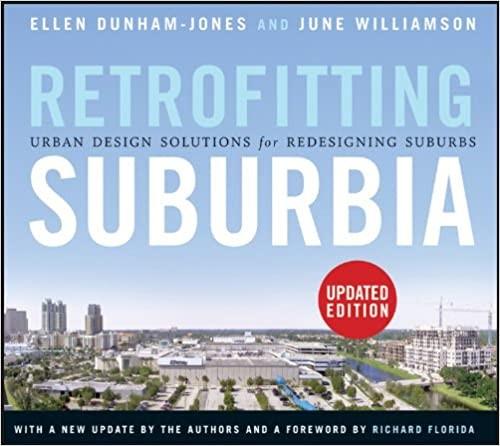
Retrofitting Suburbia, Updated Edition: Urban Design Solutions for Redesigning Suburbs
by
Ellen Dunham-Jones
and
June Williamson
Published 23 Mar 2011
HISTORY OF THE STRIP AND ITS BUILDING TYPES ADAPTIVE REUSE OF BIG BOXES AND STRIP MALLS FOR COMMUNITY-SERVING ACTIVITIES RETROFITTING SHOPPING CENTERS: THE MIDDLE SCALE RETROFITTING THE CORRIDORS THEMSELVES: DESIGNING FOR MOBILITY OR ACCESS OR BOTH RETROFITTING THE URBAN STRUCTURE OF COMMERCIAL STRIPS Chapter 5 - Strips Case Study: Mashpee Commons, Cape Cod, Massachusetts SITE HISTORY FROM STRIP TO DOWNTOWN: MASHPEE’S THIRD PLACE Chapter 6 - From Regional Malls to New Downtowns Through Mixed-Use and Public Space THE SIGNIFICANCE OF PUBLIC SPACE A BRIEF HISTORY OF MALLS DEAD AND DYING MALLS CHANGING USES TO MEET LOCAL NEEDS FROM ENCLOSED MALLS TO NEW DOWNTOWNS INFILLING AROUND A LIVE MALL THE ROLE AND FORM OF MIXED-USE AND PUBLIC SPACE IN RETROFITTED MALLS Chapter 7 - Mall Case Study: Cottonwood, Holladay, Utah REPOSITIONING MALL PROPERTIES MARKET STUDY AND MINI-CHARRETTE CHARRETTE BENEFITS OF THE CHARRETTE Chapter 8 “GREENING”: FINDING THE FUNDING FOR SUSTAINABLE URBANISM FROM BUNKERS TO STREETSCAPES: PUBLIC SPACE NEW USES/NEW USERS Chapter 9 - Edge-City Infill: Improving Walkability and Interconnectivity REDIRECTING EDGE CITIES THE EVOLUTION OF EDGE AND EDGELESS CITIES INFILLING EDGE CITIES EDGE-CITY RETROFITS ACROSS MULTIPLE PARCELS THE FUTURE OF EDGE CITIES Chapter 10 - Edge City Case Study: Downtown Kendall/ Dadeland, Miami-Dade ... REGULATING AN URBANIZING FRAMEWORK DEMOGRAPHIC ANALYSIS: REAPING THE BENEFITS OF INTERCONNECTIVITY Chapter 11 - Suburban Office and Industrial Park Retrofits to Recruit the ...
…
Richard Kreutzer for the LEED-ND Core Committee, http://www.cnu.org/sites/files/leed_public_health.pdf. 18 See the writings of William Fulton, “Are Edge Cities Losing Their Edge?” Planning 62, May 1996; Charles Lockwood, “Edge Cities on the Brink,” Wall Street Journal (eastern edition), December 21, 1994, A14; Scheer, “Edge City Monopoly”; and Woody Carter, Robert Frolick, and Tim Frye, “Edge Cities or Edge Suburbs?” presented at the Chicago Meetings of the Midwest Association for Public Opinion Research, November 2, 2002, and available at the website of the Metro Chicago Information Center, http://www.mcic.org. 19 Analysis of Chicago Metro Survey data from 1998 through 2002 reveals that the typical edge-city resident is white, well educated, Catholic, and Republican.
…
Transforming them into walkable urbanism conducive to social and physical activity is a significant challenge, and over the years many experts have expressed skepticism.18 Edge cities’ auto-dependent infrastructure, their relative lack of strong political leadership, the rise of neighborhood resistance to change and slow-growth zoning efforts, and the demographically homogenous population that contrasts significantly with its urban core counterpart are the reasons most often cited for low expectations of edge-city urbanization.19 As several researchers have noted, the residents of edge cities are even more wedded to their automobiles than suburbanites in general and other than being highly concerned about traffic congestion, draw “enormous equity from the high quality property and community they live in.”20 They see little benefit to change, and the authors of one study state, “This presents a picture of caution for planners and elected officials from Edge Cities. Edge Cities are a myth; better to think of them as Edge Suburbs. Tread carefully in propounding or even in relying upon the values of urban America to effect policy and programs.”21 Additional challenges to retrofitting edge cities include both their dearth of public spaces and pedestrian-scaled infrastructure as well as the need to operate across multiple parcels.
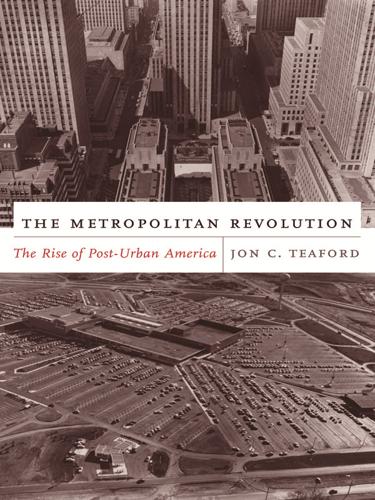
The Metropolitan Revolution: The Rise of Post-Urban America
by
Jon C. Teaford
Published 1 Jan 2006
The label that proved most popular was “edge city,” a tag created by the leading observer of the new phenomenon, Washington Post journalist Joel Garreau. In his 1991 book on the subject, Garreau defined edge cities as suburban commercial hubs with at least 5 million square feet of leasable office space, “more than downtown Memphis,” a minimum of 600,000 square feet of leasable retail area, and more daytime workers than nighttime residents. He identified 122 full-fledged edge cities across the country, from Massachusetts’s Burlington Mall area in the East to Oregon’s Beaverton-Tigard-Tualatin in the West. The edge city was, then, a nationwide phenomenon, and one that was transforming American life.
…
Impressive new commercial centers appeared, stirring excitement among commentators, who labeled them “edge cities.” These collections of office buildings, malls, and hotels were deemed the centers of the future. Yet in mobile suburbia, there was no real center. Auto-borne Americans could and did head in every direction and no longer needed to focus on any one center or hub, whether urban or suburban. By the close of the 1980s, metropolitan America was a sprawling mass offering a lifestyle smorgasbord. In the central city were charming recreations of an imagined past; in edge cities were glittering malls and glistening high-rises, portents of an imagined future.
…
These were the “new hearths of our civilization … in which the majority of metropolitan Americans now work and around which we live.”84 No matter whether they were called edge cities or something else, these new commercial agglomerations could no longer be ignored. They were everywhere, and they took various forms. A number were actually located in the business districts of older upscale suburbs. For example, downtown Bethesda, Maryland, along Wisconsin Avenue sprouted office towers, becoming a leading edge city in the Washington, D.C., area. In 1986 a planning journal described it as having “been transformed from a quiet suburb to a booming ‘outer city’ with 10-story hotels and 20-story office buildings.”85 Saint Louis’s upper-income residential suburb of Clay-ton had attracted office employment and high-rise structures in the 1960s, and during the 1980s it continued to thrive as one of the leading downtowns in Missouri.86 On the West Coast, the once-decaying downtown of genteel Pasadena emerged as a major edge city in the Los Angeles area.
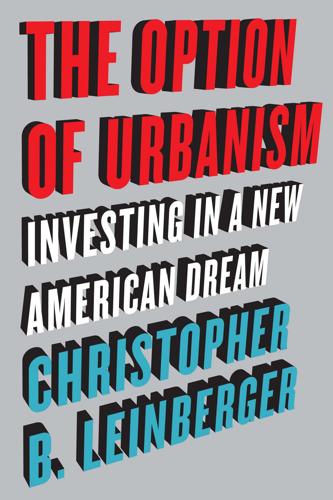
The Option of Urbanism: Investing in a New American Dream
by
Christopher B. Leinberger
Published 15 Nov 2008
Austin’s new airport is located to the east, while the favored quarter is to the northwest. EDGE CITIES The employment growth of the 1980s focused on what came to be called “edge cities,” a term devised by Joel Garreau in a 1989 book by the same name. “Edge city” was one of about thirty names coined to describe this new metropolitan place, but it was the one that stuck, describing Perimeter T H E R I S E O F D R I VA B L E S U B - U R B I A | 4 3 Center (Atlanta), Post Oak (Houston), and Sherman Oaks (Los Angeles), among many others. Edge cities were a new animal where regional-serving functions such as retail, hotels, and offices, came together in a drivable sub-urban manner.
…
Edge cities were a new animal where regional-serving functions such as retail, hotels, and offices, came together in a drivable sub-urban manner. These edge cities were where the vast majority of relocating and new jobs concentrated in the 1970s and 1980s. The typical edge city has a regional mall at the major highway intersection, surrounded by surface parking lots. All around the regional mall, like support ships surrounding a mammoth aircraft carrier, are office buildings, other big-box and specialty retail centers, hotels, and possibly a few apartment buildings and condominiums. The streets are four to eight lanes across, and few people ever consider crossing the street on foot; if you are at the mall and want to go to the office building across the street, you get into your car.
…
Futurama had come to life, and a few malls, such as South Coast Plaza in Orange County, California, Somerset Mall I & II in Troy, Michigan, the Galleria Mall in northwest Atlanta, and Tyson’s Corner in Virginia just outside of the Washington, D.C., metro area, even had the Futurama elevated walkways. The new employment concentrating in edge cities quickly grew to be larger than the old central city downtown’s employment in most metropolitan areas. Most large and small corporate headquarters and regional offices, many banks, law and accounting firms, and even federal employment centers12 began a mass exodus to these edge cities in the 1970s and especially in the 1980s. The central city job loss was such that it would have had to increase its annual growth by a factor of two just to maintain its relative market share; many center cities lost jobs in absolute terms.
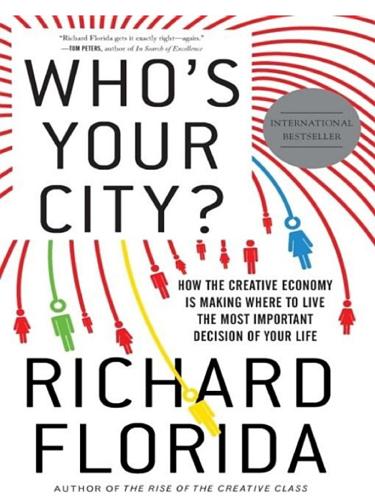
Who's Your City?: How the Creative Economy Is Making Where to Live the Most Important Decision of Your Life
by
Richard Florida
Published 28 Jun 2009
They want a bigger house with a bigger yard in a more traditional suburb. These people gravitate to edge cities, identified by Joel Garreau.6 Garreau explains that the population of an edge city increases at 9:00 A.M. on weekdays, meaning that more people arrive to work than leave to work, as would be the case in a traditional residential suburb. Edge cities have huge shopping malls and commercial complexes that, to the chagrin of some and the delight of others, serve as their centerpiece. Edge cities “are so dispersed across the geography,” Garreau writes, “as to challenge the definition.” Many of the fast-growing edge cities of the 1980s and 1990s are struggling today.
…
Indeed, tens of millions of people have moved from urban centers to suburbs that offer newer housing, newer infrastructure, and a perceived better quality of life.3 That has undoubtedly given rise to new divisions of class and race, a heightened dependence on the automobile, ever growing mass consumption, and wholly new living patterns. Populations have also shifted from the older, colder, urban centers to warmer, sunnier regions. And finally, there is the continued outward movement to the exurbs and edge cities, which are organized around highway interchanges, business parks, and shopping malls.4 But confounding this trend is the worldwide urban shift as well as a significant back-to-the-city movement. A powerful wave of gentrification has swept urban areas, bringing loft housing, condo conversions, historic preservation, new restaurants, retail outlets, and nightlife back to city neighborhoods.
…
Many of the fast-growing edge cities of the 1980s and 1990s are struggling today. They’re congested and their malls have not aged well. Edge cities now face a number of challenges, the first and foremost being how to transform themselves into real communities. How to reduce the reliance on cars as the way of getting around? How to increase density? How to make them more pedestrian friendly and accessible by mass transit? How to transform them from subdivisions amid shopping malls to integrated live-work-learn-play communities? Newburbia is another option. The brainchild of architects like Andres Duany and Peter Calthorpe, newburbia is a designed community with a traditional feel.7 The houses are clustered tightly together but surrounded by lots of green space.
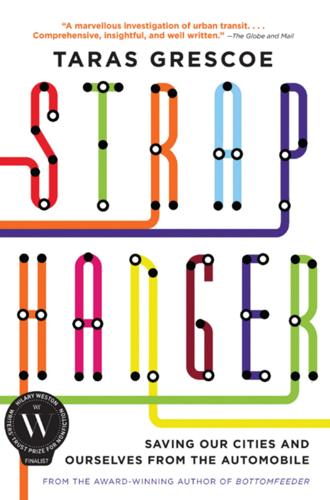
Straphanger
by
Taras Grescoe
Published 8 Sep 2011
He devotes a lot of time to scouring Atlanta’s office parks and Houston’s malls for a decent bagel, cappuccino, or indeed any sign of soul or culture, at one point confessing, “No matter how hard I tried to be fair, more than once, traveling around the country, I found myself in deep despair that the Edge Cities I was looking at would ever amount to anything physically uplifting or beautiful.” Then he tells himself to take a deep breath: edge cities are brand-new—culture will follow; even Venice took five hundred years to develop. In much less than a generation, of course, the price of a barrel of oil quadrupled, and edge cities, far from showing signs of developing lasting culture, have gone into decline as central cities experience a significant revival. At the same time, by portraying edge cities as pure products of boot-strapping entrepreneurs working in a free market, and failing to acknowledge that many of the major employers he chronicled were in defense-related industries, Garreau glossed over the elaborate federal support that props them up.
…
By the 1990s, it was clear that a new phenomenon, the American suburb version 3.0, was emerging. “We have moved our means of creating wealth,” wrote Joel Garreau in 1991, “the essence of our urbanism—our jobs—out to where most of us have lived and shopped for two generations. That has led to the rise of Edge City.” In his book of the same name, Garreau identified two hundred edge cities in the United States, among them Virginia’s Tyson’s Corner, California’s Silicon Valley, New Jersey’s Metropark, and Orange County, the prototypical centerless city. The only sure way to identify these paragons of sprawl, he found, was to locate regions with five million or more square feet of leasable office space.
…
By the mid-’80s, twice as many people worked in manufacturing in the suburbs as in central cities. Thanks to the edge city, the typical commute was no longer from a suburb to a central city skyscraper, but to an office park at the intersection of two freeways, in what, until recently, had been a farmer’s field. The most important factor in predicting an office park’s location, Garreau found, was usually the location of its CEO’s country club. Written in the techno-booster prose of the ‘90s, Edge City makes for comical reading today. “There is no petrochemical analyst around who thinks there is any supply-and-demand reason—other than war—that the price of oil should go higher than $30 a barrel in this generation,” Garreau claims at one point.
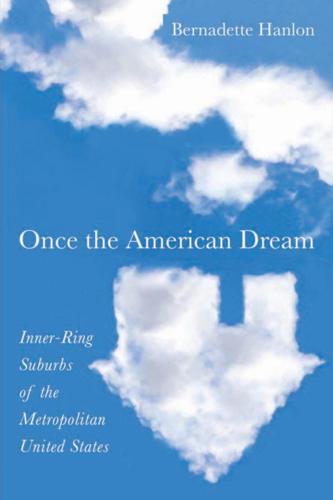
Once the American Dream: Inner-Ring Suburbs of the Metropolitan United States
by
Bernadette Hanlon
Published 18 Dec 2009
The segregation of poor minority populations into certain suburbs is equally as devastating. A third area of change is the continued sprawl of employment and people to outer suburbs. Since the 1970s, edge cities, edgeless cities, exurbs, and various subcenters have emerged on a grand scale that gives the metropolitan landscape a widely varied configuration. Multiple employment centers have sprouted with the clustering of retail and business activities. Joel Garreau’s “edge cities” can be found near the intersection of interstate highways and major roads across different metropolitan areas. Since Garreau, Robert Lang and Jennifer LeFurgy (2003) have identified more elusive “edgeless cities,” which are described as “a form of sprawling office development that never reaches the scale, density, or cohesiveness of ‘edge cities’” (Lang and LeFurgy 2003: 427).
…
The result of such changes is a mix of suburban spaces, each segregated by race, ethnicity, and economic class. The industrial, working-class suburbs that developed during the height of the Industrial Revolution (Lewis 2004) have declined, while the office park and retail developments of the outer suburbs have boomed (Lang 2003). Some scholars refer to these outer suburbs as “edge cities” (Garreau 1991). A classic example is Tyson’s Corner, Virginia. Once a quiet area 16 / Chapter 2 located some twenty miles west of Washington, D.C., Tyson’s Corner grew substantially during the 1980s and 1990s, due in large part to highway construction. The growth of this suburb has been characterized by an increase in jobs and employment infrastructure.
…
Suburbia is that stretch of land beyond the city but still within a designated metropolitan area.1 Many different types of suburbs exist; some are located close to the historic urban core, and others are many miles away at the metropolitan edge. The metropolitan landscape has morphed to include different suburban settlement types, such as inner-ring suburbs, middle-tier suburbs that lie between the inner-ring and the outer edge of the metro area, outer suburbs, exurbs on the rural-urban interface, edge cities, and so on. Defining suburbia as having one unified settlement pattern has, in many respects, become meaningless. There are distinct suburban geographies. Yet we grapple with delineating these different settlement types. How should we define inner-ring suburbs, for instance? What are the common traits, if any, of these suburbs?

Makeshift Metropolis: Ideas About Cities
by
Witold Rybczynski
Published 9 Nov 2010
The business model for Reston Town Center was influenced by nearby Tysons Corner. Tysons Corner is an early and large example of a phenomenon that Joel Garreau christened “edge city.”16 An edge city is a suburban concentration of offices, shops, apartment buildings, and entertainment venues distinguished by its large scale (Tysons Corner is the nation’s twelfth-largest business district and draws fifty-five thousand shoppers a day), and its urban density (Tysons Corner is denser than downtown Miami). “[Edge cities] look not at all like our old downtowns,” observed Garreau. “Buildings rarely rise shoulder to shoulder, as in Chicago’s Loop. Instead, their broad, low outlines dot the landscape like mushrooms, separated by greensward and parking lots.”17 The confusing mixture of office blocks, shopping malls, apartment buildings, and parking structures at Tysons Corner defies traditional urban categorization.
…
The new addition to the Denver Art Museum, designed by Studio Daniel Libeskind, was expected to attract 1 million visitors, and instead the first year it brought in 650,000; as a result, the museum has been obliged to lay off staff.17 Steven Holl’s ambitious claim for architecture’s ascendancy over city planning was made in reference to his design for a new art museum in Bellevue, outside Seattle. That museum was intended to spearhead change in the lifeless downtown. “Holl hopes viewers will see architecture as an urban amenity, one that is beautiful even as it connects people—a first step in the utopian transformation of an edge city,” breathlessly opined Architectural Record. 18 Less than three years after it opened, and following the resignations of two successive directors, the Bellevue Arts Museum closed its doors because of “failure to find an audience.”19 In 1987, Philadelphia decided to build a new downtown concert hall.
…
Andrejs Skaburskis, “New Urbanism and Sprawl: A Toronto Case Study,” Journal of Planning Education and Research 25 (2006): 233. Chapter 6: Arcades and Malls, Big Boxes and Lifestyle Centers 1. Nicolas Brazier, Histoire des petits théâtres de Paris (Paris: Allardin, 1838),105. 2. Victor Gruen, The Heart of Our Cities: The Urban Crisis: Diagnosis and Cure (New York: Simon & Schuster, 1964), 194. 3. Joel Garreau, Edge City: Life on the New Frontier (New York: Doubleday, 1991), 465. 4. Jonathan Barnett, Redesigning Cities: Principles, Practice, Implementation (Chicago: Planners Press, 2003), 52. 5. For example, ZCMI Center in Salt Lake City, Water Tower Place in Chicago, the Gallery at Market East in Philadelphia, Stamford Town Center in Stamford, Connecticut, and Horton Plaza in San Diego. 6.
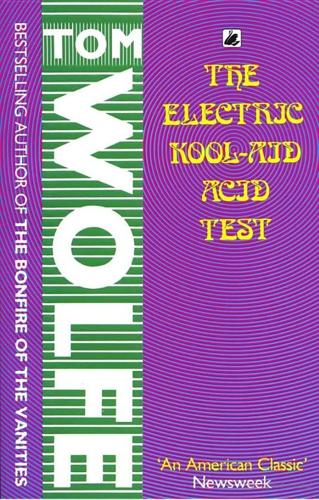
The Electric Kool-Aid Acid Test
by
Tom Wolfe
Published 1 Jan 1968
Goldhill was open... and into the pudding. He had his own fantasy, the League for Spi-ri-tu-al Dis-cov-ery, and yet he is the rare kind who might even be willing to move with their fantasy, his and the Pranksters'. It takes a rare kind. Because always comes the moment when it's time to take the Prankster circus further on toward Edge City. And always at that point some good souls are startled: Hey, wait! Like Ralph Gleason with his column in the Chronicle and his own clump of hipness. Gleason is one of those people ... Kesey can remember them all, people who thought he was great so long as his fantasy coincided with theirs. But every time he pushed on further—and he always pushed on further—they became confused and resentful . . .
…
—a huge crazy god-awful-powerful fantasy creature to begin with, 327 horsepower, shaped like twenty-seven nights of lubricious luxury brougham seduction— you're already there, in Fantasyland, so why not move off your smug-harbor quilty-bed dead center and cut loose—go ahead and say it—Shazam!—juice it up to what it's already aching to be: 327,000 horsepower, a whole superhighway long and soaring, screaming on toward ... Edge City, and ultimate fantasies, current and future ... Billy Batson said Shazam! and turned into Captain Marvel. Jay Garrick inhaled an experimental gas in the research lab ... ... AND BEGAN TRAVELING AND THINKING AT THE SPEED OF light as... The Flash .. . the current fantasy. Yes. The Kesey diamond-in-the-rough fantasy did not last very long.
…
Chief Broom! And McMurphy ... but of course. The current fantasy ... he was a McMurphy figure who was trying to get them to move off their own snug-harbor dead center, out of the plump little game of being ersatz daring and ersatz alive, the middle-class intellectual's game, and move out to ... Edge City ... where it was scary, but people were whole people. And if drugs were what unlocked the doors and enabled you to do this thing and realize all this that was in you, then so let it be ... Not even on Perry Lane did people really seem to catch the thrust of the new book he was working on, Sometimes a Great Notion.

Aerotropolis
by
John D. Kasarda
and
Greg Lindsay
Published 2 Jan 2009
The sociologist Melvin Webber dubbed this idea “the elastic mile,” because our perception of just how far a mile is shrinks as we move faster, leading Amos Hawley to note that we tend to live our lives within a sixty-minute radius from home. While that once meant a life maybe six miles wide, today it means a commute between Barcelona and London. And e-mail bound for customer service or colleagues in India is returned instantly. Edge City author Joel Garreau declared, “Cities are always created around whatever the state-of-the-art transportation device is at the time.” When the state of the art is shoe leather and donkeys, the result is the hilly paths of Jerusalem. When it’s men on horseback and sailing ships, it’s the ports of Lisbon, Hong Kong, or Boston, and the canals of Venice and Amsterdam.
…
When it’s men on horseback and sailing ships, it’s the ports of Lisbon, Hong Kong, or Boston, and the canals of Venice and Amsterdam. The birth of the railroad produced Kansas City, Omaha, and the stockyards of Chicago. And the mass production of the Model T led first to Los Angeles and later to Levittown. Today, the modern combination on the ground is the automobile and Internet, yielding Garreau’s exurban “edge cities,” which are everywhere and nowhere within America, and have since cropped up in Bangalore and beyond. Soaring above them all are jet aircraft—first put into service sixty years ago, at the on-set of the Jet Age—collapsing the distance between Dallas and Dubai as effortlessly as the Internet nodes connecting them.
…
And still no one had thought to make any provisions for what should and what shouldn’t be built beyond the perimeter, because even in the year following Sputnik, no one could foresee what would happen next: Ronald Reagan’s blank checks for Star Wars and the contractors who cashed them would conspire to plow under the hillsides and erect the prototypical edge cities that redefined our urban landscapes. Dulles would be the anchor. The airport’s saving grace was its size, nearly four times the landmass of LAX, and more than all of greater LA’s airports combined. No one could build horse farms or McMansions close enough to complain about the noise, leaving the airport to operate in peace and (relative) quiet.
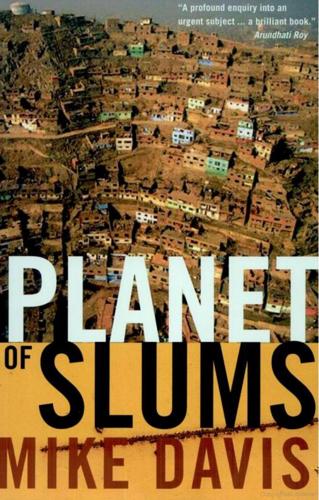
Planet of Slums
by
Mike Davis
Published 1 Mar 2006
In Algiers's famous seaside district of Bab-elOued, on the other hand, the indigenous poor have replaced the colon working class. Although the dominant global pattern is the eviction of the poor from the center, some Third World cities reproduce US-style urban segregation, with the postcolonial middle classes fleeing from the core to gated suburbs and so-called "edge cities." This has long been the case in Kingston, where one quarter of a million poor people inhabit the crime-ridden but culturally dynamic Downtown, wThile the middle 40 David Glasser, "The Growing Housing Crisis in Ecuador" in Carl Patton (ed.), Spontaneous Shelter: International Perspectives and Prospects, Philadelphia 1988, p. 150. 41 Oscar Lewis, The Children of Sanche%: Autobiography of a Mexican Family, New York 1961. 42 Kalinga Tudor Silva and Karunarissia Athukorala, The Watta-Dwellers: A Sociological Study of Selected Urban Tow-Income Communities in Sri Tanka, Lanham (Md.) 1991, p. 20. 43 Feng-hsuan Hsueh, Beijing: The Nature and the Planning of the Chinese Capital City, Chichester 1995, pp. 182-84.
…
"township residents must walk to the foothills of the Shan mountains looking for firewood, and there are no industrial zones, garment factories, and other sweatshops to underemploy laborers as there are in some of Rangoon's relocated townships."99 International refugees and internally displaced people (IDPs) are often more harshly treated even than urban evictees — and some of the Third World's huge refugee camps have evolved into edge cities in their own right. Thus Gaza — considered by some to be the world's largest slum — is essentially an urbanized agglomeration of refugee camps (750,000 refugees) with two thirds of the population subsisting on less than $2 per day.10* Dadaad, just inside the Kenyan border, houses 125,000 Somalis, just as Goma in Zaire during the mid-1990s was a pitiful refuge for an estimated 700,000 Rwandans, many of whom died of cholera due to the appalling sanitation conditions.
…
Houses are turned into virtual fortresses by surrounding them with high walls topped by glass shards, barbed wire, and heavy iron bars on all windows. 75 This "architecture of fear," as Tunde Agbola describes fortified lifestyles in Lagos, is commonplace in the Third World and some parts of the First, but it reaches a global extreme in large urban societies with the greatest socio-economic inequalities: South Africa, Brazil, Venezuela, and the United States.76 In Johannesburg, even before the 73 Solomon Benjamin, "Governance, Economic Settings and Poverty in Bangalore," Environment and Urbanisation 12:1 (April 2000), p. 39. 74 Harald Leisch, "Gated Communities in Indonesia," Gties 19:5 (2002), pp. 341, 344-45. 75 Berner, Defending a Place, p. 163. 76 For a description of Lagos's fortress homes, see Agbola, Architecture of Fear, pp. 68-69. election of Nelson Mandela, big downtown businesses and affluent white residents fled the urban core for northern suburbs (Sandton, Rand burg, Rosebank, and so on) which were transformed into highsecurity analogues of American "edge cities." Within these sprawling suburban laagers with their ubiquitous gates, housing clusters, and barricaded public streets, anthropologist Andre Czegledy finds that security has become a culture of the absurd. The high perimeter walls are often topped by metal spikes, razor wire, and more recently, electrified wiring connected to emergency alarms.
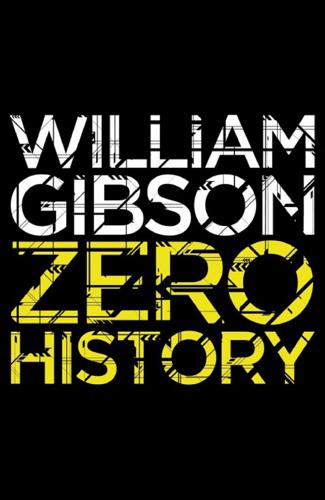
Zero History
by
William Gibson
Published 6 Sep 2010
Names, characters, places and incidents either are the product of the author’s imagination or are used fictitiously, and any resemblance to actual persons, living or dead, businesses, companies, events or locales is entirely coincidental All rights reserved Without limiting the rights under copyright reserved above, no part of this publication may be reproduced, stored in or introduced into a retrieval system, or transmitted, in any form or by any means (electronic, mechanical, photocopying, recording or otherwise), without the prior written permission of both the copyright owner and the above publisher of this book A CIP catalogue record for this book is available from the British Library ISBN: 978-0-14-196570-3 Contents 1. CABINET 2. EDGE CITY 3. SLUT’S WOOL 4. PARADOXICAL ANTAGONIST 5. THIN ON THE GROUND 6. AFTER THE GYRATORY 7. A HERF GUN IN FRITH STREET 8. CURETTAGE 9. FUCKSTICK 10. EIGENBLICH 11. UNPACKING 12. COMPLIANCE TOOL 13. MUSKRAT 14. YELLOW HELMET 15. THE DROP 16. HONOR BAR 17. HOMUNCULI 18. 140 19. PRESENCES 20.
…
She knew now that it was going to be impossible to avoid him. “Eleven, then,” he said. “Looking forward to it.” “Good night. Hubertus.” “Good night.” He hung up. She put the handset down. Careful of the hidden cricket. Not its fault. Nor hers. Nor even his, probably. Whatever he was. 2. EDGE CITY Milgrim considered the dog-headed angels in Gay Dolphin Gift Cove. Their heads, rendered slightly less than three-quarter scale, appeared to have been cast from the sort of plaster once used to produce worryingly detailed wall-decorations: pirates, Mexicans, turbaned Arabs. There would almost certainly be examples of those here as well, he thought, in the most thoroughgoing trove of roadside American souvenir kitsch he’d ever seen.
…
He propped the red tube against the passenger seat, picked up the money, and closed the door. A scroll of semitranslucent white paper was less threatening. Cars passed on the highway. He walked the fifteen feet to the sign, his shoes crunching loudly on the gravel. Above the blue italic FAMILY, he made out EDGE CITY in what little remained of a peeling red; below it, RESTAURANT. At the bottom, to the left, had once been painted, in black, the childlike silhouettes of three houses, though like the red, sun and rain had largely erased them. To the right, in a different blue than FAMILY, was painted what he took to be a semi-abstract representation of hills, possibly of lakes.
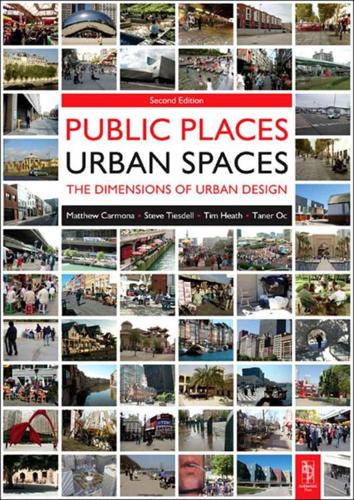
Public Places, Urban Spaces: The Dimensions of Urban Design
by
Matthew Carmona
,
Tim Heath
,
Steve Tiesdell
and
Taner Oc
Published 15 Feb 2010
While the established centres were being eroded, on the urban periphery new concentrations of business, shopping and entertainment were being developed. To describe larger versions of these, Garreau (1991) coined the term ‘edge city’. For Garreau, edge cities were the result of a third wave of decentralisation – that of employment opportunities moving out to where people had lived and shopped for two decades. Garreau established five rules to identify an edge city:• Having more than five million square feet (465 000 m2) of office space, housing between 20 000 and 50 000 office workers. • Having more than 600 000 square feet (56 000 m2) of retail space, making it a centre of recreation and commerce as well as office work
…
For Garreau (1991: 116), these are ‘most ambitious’ and ‘most awesome’:‘A Greenfield occurs at the intersection between several thousand acres of farmland and one developer’s monumental ego. It embraces an amazingly grand master-planned vision of human nature and rigid control of vast areas by private corporations.’ Edge city development was not unregulated and was typically permitted. For developers it was a path of least resistance (and highest profitability) through the regulations – that is, what the development industry found easiest to build. More precisely, though, the edge city is a product of the car, with most edge cities developing at or near existing or planned freeway intersections, or near major airports, and having hierarchical street arrangements centred on pedestrian-hostile arterial roads and winding parkways often without sidewalks/pavements.
…
In the public sector – and increasingly in the private sector – urban designers are responsible for preparing such guidelines, which link policy and practice and set the parameters for design. (vii) Urban manager City centre or urban managers promote, develop and undertake the day-to-day management of the urban core. Initially employed to sustain older retail centres against the economic threat of out-of-town retail centres and new ‘edge cities’, their role has evolved into a concern for the whole urban environment and often encompasses many of the activities listed under ‘facilitator of urban events’ below. Other important activities include starting small-scale initiatives through assembling a coalition of interest groups and managing the servicing and maintenance of the public realm.
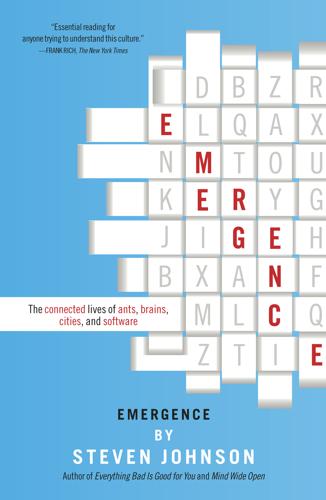
Emergence
by
Steven Johnson
But those micromotives nevertheless combine to form macrobehavior, a higher order that exists on the level of the city itself. Local rules lead to global structure—but a structure that you wouldn’t necessarily predict from the rules. Krugman talks about his “plum pudding” polycentrism as a feature of the modern “edge city,” but his model might also explain an older convention: the formation of neighborhoods within a larger metropolitan unit. Neighborhoods are themselves polycentric structures, born of thousands of local interactions, shapes forming within the city’s larger shape. Like Gordon’s ant colonies, or the cells of a developing embryo, neighborhoods are patterns in time.
…
In a dispersed, car-centric city like Los Angeles, highways are the connecting nodes, one of the few zones where the city’s different groups encounter each other—albeit at sixty-five miles an hour. Ever since Death and Life was first published in the early sixties, Jacobs-inspired critics have lambasted the dispersed communities of L.A. and Phoenix, and their even more anonymous descendants—the “edge cities” that have sprouted up around convenient freeway intersections or high-volume parking lots, the way towns once nestled up to harbors or major rivers. Progressive urbanists bemoaned the mallification of the American city, with vibrant public streets giving way to generic, private shopping complexes.
…
Imagine the universe of HTML documents as a kind of city spread out across a vast landscape, with each document representing a building in that space. The Web’s city would be more anarchic than any real-world city on the planet—no patches of related shops and businesses; no meatpacking or theater districts; no bohemian communities or upscale brownstones; not even the much-lamented “edge city” clusters of Los Angeles or Tyson’s Corner. The Web’s city would simply be an undifferentiated mass of data growing more confusing with each new “building” that’s erected—so confusing, in fact, that the mapmakers (the Yahoos and Googles of the world) would generate almost as much interest as the city itself.
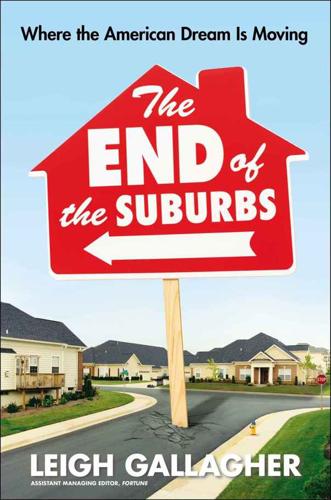
The End of the Suburbs: Where the American Dream Is Moving
by
Leigh Gallagher
Published 26 Jun 2013
Sprawl in Orange County is so vast that when discussing the suburbs with me one day, the financial blogger Felix Salmon gleefully proclaimed Orange County “a suburb without an urb!” In 1991, the author and scholar Joel Garreau famously coined the phrase “edge city,” his term for these concentrations of business, shopping, and entertainment that represented the new face of metropolitan growth. We would soon expand so far out that edge cities would lose their edge. But back then, they represented our official entry into sprawldom. In places like Atlanta, less than 10 percent of the metropolitan area’s residents lived in the city core. By 2000, metropolitan areas covered almost twice as much land as they did in 1970.
…
Lang in a 2001 report for the Fannie Mae Foundation that identified fifty-three boomburbs, defined as incorporated places in the top fifty metropolitan areas in the United States with more than one hundred thousand residents that are not the core cities in their metropolitan areas and that maintained double-digit population growth over consecutive censuses between 1970 and 2010. See also: Robert E. Lang and Jennifer B. LeFurgy, Boomburgs: The Rise of America’s Accidental Cities (Brookings Institution Press, 2007). In 1991, the author and scholar: Joel Garreau, Edge City: Life on the New Frontier (Anchor, 1992). Perhaps the most famous coinage of the U.S. suburbs since the phrase “bedroom community” first appeared. In places like Atlanta: Demographia.com, U.S. Census Bureau; see also http://www.demographia.com/db-atl1960.htm. By 2000, metropolitan areas covered: U.S.
…
See also New Urbanism background information, 115–17 on Pensacola Parking Syndrome, 63 post-disaster planning, 126 reactions to ideas of, 193–94 on sprawl, 40 on suburban benefits, 191–92 on teens in suburbia, 90 Duany Plater-Zyberk & Company (DPZ), 116–17 Duckworth, Jason, 36, 49, 62, 69–70, 135 on adolescent car independence, 110 on appeal of suburbia, 49 city, move to, 171 on Duany, 117 on McMansions, 69–70 Duckworth, Joe, 135 Dumbaugh, Eric, 83–84, 106–7 DUMBO, Brooklyn, 18, 163–64 Dump the Pump, 109 Dunham-Jones, Ellen, 103, 180, 181 East Passyunk, Philadelphia, 117–18 Edge cities, 45–46 Ehrenhalt, Alan, 166 Eisenhower, Dwight D., 38 Eisner, Michael, 197 Emerging adulthood, 153 Empty nesters, in cities, 172 Energy costs. See also Oil prices energy-efficient cars, 105, 108 and suburban excess, 21–22 England, suburban development in, 28 England, Don, Jr., 183 Environment destruction and suburban development, 47–48, 68 farmland, developments built on, 38, 68, 182 pollution and automobiles, 46, 99, 108 Euclid, Ohio, 40 Euclidean zoning, 41 Extell Development Company, 151 Families.

The New Urban Crisis: How Our Cities Are Increasing Inequality, Deepening Segregation, and Failing the Middle Class?and What We Can Do About It
by
Richard Florida
Published 9 May 2016
Vernon later developed his classic product cycle model of industrial location to explain how the rise of standardized manufacturing technologies and automation were allowing factories to move to suburban green-field and foreign offshore locations, where land and labor were cheaper. Raymond Vernon, “International Investment and International Trade in the Product Cycle,” Quarterly Journal of Economics 80, no. 2 (May 1966): 190–207. On the edge city, see Joel Garreau, Edge City: Life on the New Frontier (New York: Anchor Books, 1991). Reflecting upon these changes in the postindustrial metropolis, urban theorists who came to be called the “LA School” argued that metropolitan areas such as LA and other Sunbelt regions no longer grew in a ring-like fashion from the urban center but in a less coherent and more spread-out pattern with a multiplicity of industrial, commercial, and residential zones.
…
In their 1959 study of Greater New York, Anatomy of a Metropolis, the economists Edgar Hoover and Raymond Vernon documented what they called the flight from density. Industry and commercial activity, as well as people, they said, were making a trek from the city to the suburbs. This outward shifting of people and jobs reached its pinnacle with the rise of the so-called edge city, in which exurban office parks and malls essentially replicated and replaced the functions of the increasingly deserted and dysfunctional urban center.8 By the late 1990s and early 2000s, as we have seen, the shape of our cities and metro areas began to change significantly, as affluent and educated people started returning to the urban cores and poverty began to be pushed outward into the suburbs.
…
By then, suburban malls had opened up in the nearby communities of Woodbridge and Livingston, and industrial parks and office complexes were springing up next to highway interchanges. The same thing was happening all over the country. By the 1970s and 1980s, high-technology industries were thriving in the suburbs outside of Boston, San Francisco, Austin, and Seattle. Many of those bedroom communities developed into full-blown edge cities—places where people lived, worked, and shopped without ever having to visit a real downtown. I didn’t set foot in Manhattan until I was in high school, even though it was just a few miles away. America had become a suburban nation, its urban centers in sharp decline. What a difference today. Affluent, educated, young, childless, white Americans are moving back to cities, while immigrants, minorities, and the poor are heading out to the suburbs.
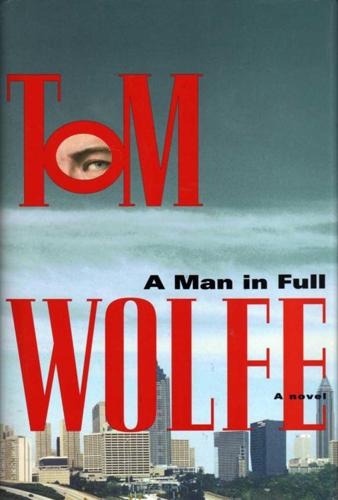
A Man in Full: A Novel
by
Tom Wolfe
Published 31 Mar 2010
The commercial part of Buckhead, which not so long ago had seemed like the suburbs, was precisely that: an edge city, Atlanta's first. Then came Perimeter Center. Then Don Childress developed the Galleria out where Highways 75 and 285 crossed, and Frank Carter developed the Cumberland Mall, and another edge city grew up around them. All the edge cities were north of Downtown and Midtown Atlanta, and they were being built deeper and deeper into the immense ocean of trees. Already a new edge city was forming around Spaghetti Junction and another one northeast of there, out in Gwinnett County, known as the Gwinnett Place Mall.
…
Mack Taylor and Harvey Mathis had built an office park called Perimeter Center out among all those trees, which had been considered a very risky venture at the time, because it was so far from Downtown; and now Perimeter Center was the nucleus around which an entire edge city, known by that very name, Perimeter Center, had grown. Taylor and Mathis had proved to be geniuses. Edge city . Charlie closed his eyes and wished he'd never heard of the damn term. He wasn't much of a reader, but back in 1991 Lucky Putney, another developer, had given him a copy of a book called Edge City' by somebody named Joel Garreau. He had opened it up and glanced at it-and couldn't put it down, even though it was 500 pages long. He had experienced the Aha!
…
Already a new edge city was forming around Spaghetti Junction and another one northeast of there, out in Gwinnett County, known as the Gwinnett Place Mall. Already Forsyth County, farther north still, had turned from a sleepy Redneck Redman Chewing Tobacco rural outback into Subdivision Heaven, and one of the three fastest-growing counties in the United States. Bango! Charlie had envisioned a new edge city, due west of Forsyth and north of the Galleria, in Cherokee County. It would be an edge city bearing his name: Croker. Did he dare open his eyes and look down? He didn't want to, but he couldn't help himself Just as he feared,' the G-5 was in the perfect spot for an aerial view of, Croker Concourse. There; it was, the tower, the mall, the cineplex, the hotel-and-apartment complex, the immense swath of asphalt (conspicuously empty) for parking - a preposterously lonely island sticking up out of that ocean of trees.
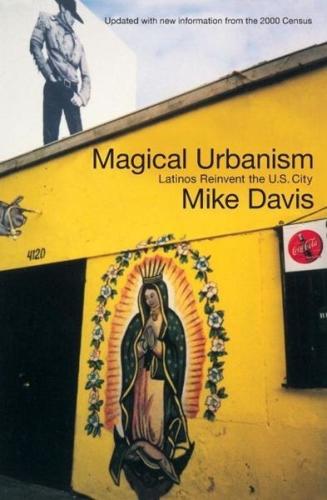
Magical Urbanism: Latinos Reinvent the US City
by
Mike Davis
Published 27 Aug 2001
Without boom, many big American New cities this mean- many Do- Latino population would be dramatically shrinking in the face of accelerated white flight and, since 1990, Black out- migration. "The Greater Los Angeles and New York City metro areas," the National Journal notes, "each suffered a net loss of more than one nos, with help million domestic migrants from 1990-95." Lati- from Asian immigrants, compensated dus to the edge cities for this exo- and exurbs.^^ The stubbornly binary discourse of American public culture MAGICAL URBANISM has, however, yet to register the historical significance of this The ethnic transformation of the urban landscape. the contemporary big still living color of dynamically Asian as well as Latino, is viewed on an old-fashioned black-and-white screen.
…
homeless or housed in away in the exploitative recesses of home work, itinerant day they are increasingly likely to be illegal shanty-towns like those tucked back canyons of northern San Diego County, where Guatemalan and Mixtec laborers live clandestinely a few hundred yards from $750,000 ocean-view homes. Where they are in edge cities more visible, as in street-corner and exurbs across the country, undocumented work- ers face a nativist hysteria that frequently rises to (As labor markets an occult pitch. Tony Hay, chairman of the Putnam County [New York] Leg- islature, ranted to the Times: "The World Trade Center blew up, planes are blown out of the they're all sky.
…
In Los Angeles and elsewhere, aging white voters the electorate voted down if a minority a majority of of the population) have consistently school bonds for minority-majority public schools. Continuing federal Title largely failed to make up I subsidies to inner-city education have for the favoritism majority state legislatures toward growth (still belts. 1990s, in the new shown by suburban- schools in edge-city Moreover, the resegregation of schools during the wake of further white flight (from both cities and public education) and the federal courts' rulings against man- EDUCATION GROUND ZERO 115 dated integration, have affected Latino children even African- Americans (see Table 11). According to sity's Civil more than Harvard Univer- Rights Project (using 1997 data), "nationwide, nearly 70 percent of black students and 75 percent of Latinos attend schools that are predominantly black, Latino or Native Ameri»210 can.
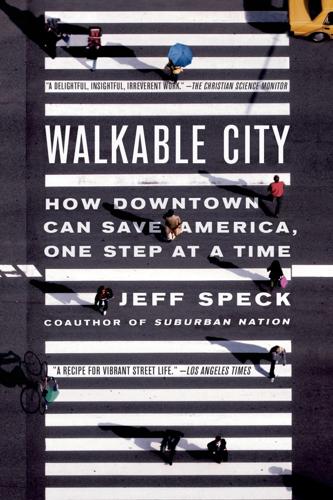
Walkable City: How Downtown Can Save America, One Step at a Time
by
Jeff Speck
Published 13 Nov 2012
Mixed uses and pedestrian-friendly streets are both part of one common model (the traditional urban neighborhood), while isolated uses and unwalkable streets constitute the other (sprawl). Where the algorithm begins to fail is in high-intensity, commercial edge cities. Here, a preponderance of retail outlets cranks up the score, despite the fact that the only walking occurs in gigantic parking lots. For this reason, sprawl poster child Tysons Corner, Virginia—straight from the cover of Joel Garreau’s book Edge City—earns an impressive 87. This puts it two points ahead of my own U Street neighborhood in Washington, D.C., even though half my neighbors don’t own cars and walk to everything.
…
.; cities shaped around; costs of; decline in; health issues and; inner-city fees for; pollution and; productivity vs.; risks of Duany, Andres Duany-Plater Zyberk & Company (DPZ) Dumbaugh, Eric Duranton, Gilles Durning, Alan Dwell (magazine) Earth Day 2007 EcoDensity (Vancouver, B.C., initiative) Economist, The (magazine) EcoPass (Boulder, Colo.) Edge City (Garreau) “edge effect” Ehrenhalt, Alan electric cars Elephant in the Bedroom, The: Automobile Dependence and Denial (Hart and Spivak) El Nasser, Haya Emanuel, Rahm Emerson, Ralph Waldo Emotional Freedom Techniques (EFT) Energy Information Administration, U.S. Environmental Protection Agency (EPA) Evening Star (Washington, D.C.), Ewing, Reid Exxon Mobil Facebook Fallows, James FarmVille figural object vs. figural space Firestone Tire and Rubber “Five B’s” “Fixed and Hazardous Objects” (FHOs), street trees as Flat Earth Society Florida, Richard Ford, Henry Ford, Jane forest edge Forester, John Forest Service, U.S.
…
Cities,” published by Gilles Duranton and Matthew Turner at the University of Toronto, which finds that “extensions to public transit are not appropriate policies with which to combat traffic congestion” (34). ●Yonah Freemark, “An Extensive New Addition to Dallas’s Light Rail Makes It America’s Longest.” While some of the new station-area developments contain high density, not one of them has taken the form of a walkable neighborhood. Most are the conventional edge-city conglomerations of towers and parking lots, with nary an intimate street in sight. ●Charles Hales’s presentation at Rail-Volution, October 18, 2011. The “host of strategies” included Portland’s famous urban-growth boundary, which had contributed to a pent-up demand for real estate. ●Light Rail Now, “Status of North American Light Rail Projects,” 2002.
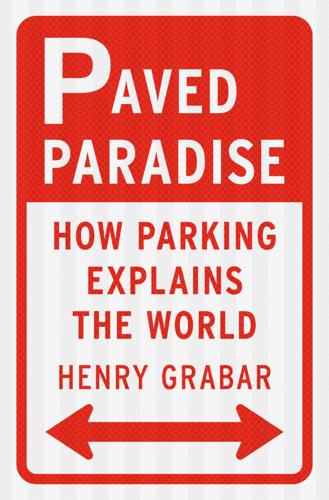
Paved Paradise: How Parking Explains the World
by
Henry Grabar
Published 8 May 2023
Most everything we have built in this country since the 1960s can be seen through Vallianatos’s glasses: it is the architecture of parking requirements, and it is all around us. * * * — In 1991, the journalist Joel Garreau wrote a book called Edge City about the suburban, highway-adjacent clusters of offices, retail, and hotels that make up the typical setting for white-collar labor in America today. He spoke to hundreds of developers about why these places looked the way they did, and what it meant. “The measure of time, individualism, and civilization, they repeat, is parking.” Developers had two laws that explained “just about everything in the physical arrangement of Edge City”: An American Will Not Walk More Than Six Hundred Feet Before Getting Into Her Car To Park an Automobile Takes Four Hundred Square Feet Putting those two axioms together with the high cost of building parking structures, Garreau explained why all these Forbidden City buildings were missing from postwar American architecture: they had vanished into what the apartment builder Payton Chung called the Valley of High Parking Requirements.
…
Still, the facilities guy who told firms how to pick parking knew which side his bread was buttered on: he would get fired if there wasn’t enough parking, but he’d never have to answer for a lease that was in line with the office market at large. At a highway interchange in North Plano, Texas—an affluent edge city north of Dallas—Granite built a 330,000-square-foot office for mortgage lender Fannie Mae. Fannie Mae insisted on 5.5 spaces per one thousand square feet, nearly twice the Plano code. It would add up to 1,815 spaces for just 1,550 desks. “At the same time,” David said, “they were starting to whine about the cost of the project.”
…
Go to note reference in text a downtown parking map: “Parking Map of Downtown,” Los Angeles Times, November 27, 1958. Go to note reference in text “two theme parks, a beach, and a sign”: Allison B. Cohen, “Buying into LA,” Los Angeles Times, April 13 2003. Go to note reference in text “The measure of time”: Joel Garreau, Edge City (New York: Anchor Books, 1991), 124. Go to note reference in text Valley of High Parking Requirements: Payton Chung, interview with the author, January 23, 2020. Go to note reference in text “You can’t buy just one”: Katelyn Stangl, “Parking? Lots! Parking over the Minimum in Los Angeles,” UCLA Institute of Transportation Studies, June 2019, doi.org/doi:10.17610/T65P41.

The Rise of the Network Society
by
Manuel Castells
Published 31 Aug 1996
America’s last suburban frontier The image of a homogeneous, endless suburban/ex-urban sprawl as the city of the future is belied even by its unwilling model, Los Angeles, whose contradictory complexity is revealed by Mike Davis’s marvelous City of Quartz.60 Yet it does evoke a powerful trend in the relentless waves of suburban development in the American metropolis, West and South as well as North and East, toward the end of the millennium. Joel Garreau has captured the similarities of this spatial model across America in his journalistic account of the rise of Edge City, as the core of the new urbanization process. He empirically defines Edge City by the combination of five criteria: Edge City is any place that: (a) Has five million square feet or more of leasable office space – the work place of the Information Age… (b) Has 600,000 square feet or more of leasable retail space… (c) Has more jobs than bedrooms (d) Is perceived by the population as one place… (e) Was nothing like ‘city’ as recently as thirty years ago.61 He reports the mushrooming of such places around Boston, New Jersey, Detroit, Atlanta, Phoenix, Texas, southern California, San Francisco Bay area, and Washington, DC.
…
First, the development of these loosely interrelated ex-urban constellations emphasizes the functional interdependence of different units and processes in a given urban system over very long distances, minimizing the role of territorial contiguity, and maximizing the communication networks in all their dimensions. Flows of exchange are at the core of the American Edge City.64 Secondly, this spatial form is indeed very specific to the American experience because, as Garreau acknowledges, it is embedded in a classic pattern of American history, always pushing for the endless search for a promised land in new settlements. While the extraordinary dynamism that this represents did indeed build one of the most vital nations in history, it did so at the price of creating, over time, staggering social and environmental problems.
…
Unless the development of private “jails-for-rent” in Western Texas is considered a welcome process to complement the social and physical disinvestment in American inner cities, the “fuite en avant” of American culture and space seems to have reached the limits of refusing to face unpleasant realities. Thus, the profile of America’s informational city is not fully represented by the Edge City phenomenon, but by the relationship between fast ex-urban development, inner- city decay, and obsolescence of the suburban built environment.66 European cities have entered the Information Age along a different line of spatial restructuring linked to their historical heritage, although finding new issues, not always dissimilar to those emerging in the American context.
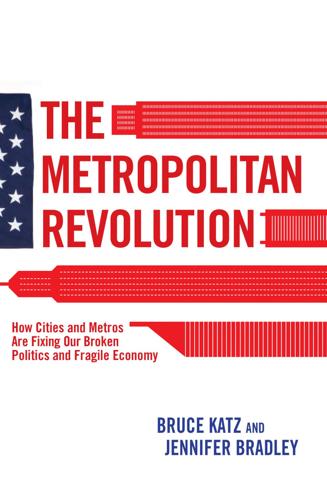
The Metropolitan Revolution: How Cities and Metros Are Fixing Our Broken Politics and Fragile Economy
by
Bruce Katz
and
Jennifer Bradley
Published 10 Jun 2013
Organizations need internal investment to make smart external investments.66 HOUSTON AND THE IMAGINED FUTURE In his sweeping and irreverent travelogue through the edge cities that exploded on the American landscape in the 1970s and 1980s, the writer Joel Garreau finds America’s physical future in Houston. Garreau writes of the massive hotel-mall-office-residential conglomeration called the Galleria, which is about five miles to the north and west of Gulfton and Baker-Ripley: 05-2151-2 ch5.indd 108 5/20/13 6:52 PM HOUSTON: EL CIVICS 109 It raises questions that will resound across America well into the twenty-first century. . . . If Edge City is our new standard form of American metropolis . . . will these places ever be diverse, urbane, and livable?
…
If Edge City is our new standard form of American metropolis . . . will these places ever be diverse, urbane, and livable? The answers to these questions are of no small moment, for as we push our lives into the uncharted territory of Edge Cities, places like them are becoming the laboratories for how civilized urban American will be for the rest of our lifetime.67 Twenty years later, metropolitan Houston is still a laboratory where urgent questions are tested and played out, but these questions are about people. What makes a metropolis is not the mix of buildings, highways, and uses, whether orderly or chaotic; the mix that matters is people and their skills and the opportunities they have to flourish and for their children, and neighbors, and friends to flourish.
…
It is essential to address the old nonprofit dilemma of choosing between more investment in programs or more investment in overhead: both are necessary.” Blanchard, “People Transforming Communities. For Good.” See also Angela Blanchard, “A Hierarchy of Needs: For Organizations,” 2012 (http:// angelablanchard.com/BlanchardModelofOrganizationalDevelopment.pdf). 67. Joel Garreau, Edge City: Life on the New Frontier (New York: Doubleday, 1991), p. 214. 68. Angela Blanchard, “Being United around a City,” presentation at the United Neighborhood Centers of America Neighborhood Revitalization Conference, Washington, D.C., July 2011 (www.youtube.com/watch?v=AjUCt07ZIBkO). 69. Angela Blanchard, “The First New Question?”
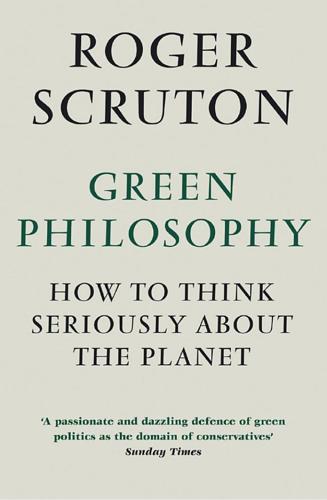
Green Philosophy: How to Think Seriously About the Planet
by
Roger Scruton
Published 30 Apr 2014
Sokal and Jean Bricmont, Fashionable Nonsense, London, 2003. 259 See Roger Scruton, Modern Culture, London, 2004. 260 Against the home and the family, Foucault, Laing, Esterson; against the nation, Pilger, Chomsky, Zinn. 261 Kant, Critique of Judgement, Oxford, 2008; Roger Scruton, Beauty, Oxford, 2009. 262 For more on this point, and on the concept of intrinsic value generally, see John O’Neill, ‘The Varieties of Intrinsic Value’, The Monist, 1992, in Keller, ed., op. cit., and also Krebs, Ethics of Nature, which explores the many ways in which we might discover and enjoy intrinsic values in nature. 263 This approach to value is second nature to economists, and ‘environmental economics’ has been subjected to severe criticism for this very reason by Sagoff, op. cit. 264 For some of the tendencies here see Krebs, Ethics of Nature. 265 See Martin Seel, Eine Ästhetik der Natur, Frankfurt, 1991. 266 See Scruton, Beauty. 267 Milan Kundera, The Unbearable Lightness of Being, New York, 1984. 268 See José Bové and François Dufour, The World is Not for Sale: Farmers Against Junk Food, London, 2001, and the websites of Slow Food International and Slow Food UK. 269 I defend this view in Art and Imagination, London, 1974, and Beauty. 270 Jane Jacobs, The Death and Life of Great American Cities, New York, 1961; Nicolai Oroussoff, ‘Outgrowing Jane Jacobs and Her New York’, New York Times, 30 April 2006. 271 Nathaniel Baum-Snow, ‘Changes in Transportation Infrastructure and Commuting Patterns in US Metropolitan Areas, 1960–2000’, American Economic Review: Papers and Proceedings, May 2010. 272 James Howard Kunstler, The Geography of Nowhere: The Rise and Decline of America’s Man-Made Landscape, New York, 1993, and The Long Emergency: Surviving the Converging Catastrophes of the Twenty-First Century, New York, 2005. 273 Joel Kotkin, The Next Hundred Million: America in 2050, New York, 2010. 274 Robert Bruegmann, Sprawl, Chicago, 2005. Joel Garreau, Edge City: Life on the New Frontier, New York, 1991; Paul Barker, The Freedoms of Suburbia, London, 2009. See also Paul Krugman, The Self-Organizing Economy, Cambridge, MA, 1998, on edge cities as issuing from the dialectic of centripetal and centrifugal forces. Howard Kunstler’s response to Bruegmann is well worth reading, and appears in Salmagundi, 152, Fall 2006. 275 The Congress for New Urbanism is an American voluntary association, whose current president is John Norquist, and which is beginning to recruit a following among architects, planners and schools of architecture across the country.
…
Kotkin’s argument has been backed up recently by Robert Bruegmann in America and Paul Barker in Britain, both defending the suburbs as chosen environments, even as places of deep settlement, in which ordinary people achieve a freedom and security that are not easily available to them elsewhere. Their case has been amplified by Joel Garreau’s striking advocacy of ‘edge city’ – of the temporary focus on the edge of things, moving always outwards across the land, and largely indifferent to the chaos that it leaves in its wake.274 The conflict between the two visions of urbanization – the centripetal and the centrifugal – has come to a head with the emergence of the New Urbanist movement, with the work of Léon Krier, adviser to the Prince of Wales’s model new town of Poundbury in Dorset, and with the writings of Christopher Alexander and Nikos Salingaros.275 The New Urbanists have forcefully argued that aesthetic choices are not ecologically neutral but, on the contrary, internally connected to the whole enterprise of settlement.
…
Friedman, Thomas, Lexus and the Olive Tree, rev. ed., London and New York, HarperCollins, 1999. Furet, François, Penser la révolution française, Paris, Gallimard, 1978. Garnaut, Ross, Howes, Stephen, Jotzo, Frank, and Sheehan, Peter, ‘The Implications of Rapid Development for Emissions and Climate-change Mitigation’, in Helm and Hepburn. Garreau, Joel, Edge City: Life on the New Frontier, New York, Doubleday, 1991. Geertz, Clifford, The Interpretation of Cultures, 1973, New York, Basic Books, reissued 2009. Giddens, Anthony, The Politics of Climate Change, Cambridge, Polity, 2009. Girard, René, La Violence et le sacré, Paris, Hachette, 1972. Girard, René, Des choses cachées depuis la fondation du monde, Paris, Hachette, 1978.
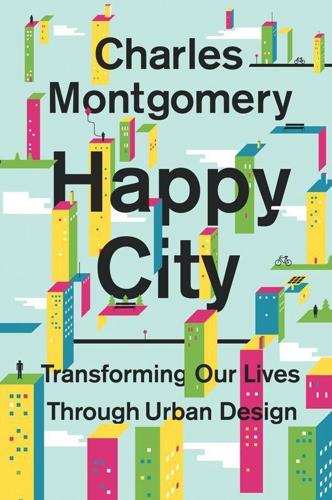
Happy City: Transforming Our Lives Through Urban Design
by
Charles Montgomery
Published 12 Nov 2013
When suburbs began to scatter beyond the urban edge, some called them exurbs. When, in the 1980s, downtown businesses seemed to be moving en masse to freeway-fed business parks and megamalls, Washington Post reporter Joel Garreau dubbed these new agglomerations “edge cities.” But urban life has now been stretched to such an extent that suburbia, exurbia, and edge cities together form a distinct system that has transformed the way that entire city-regions function. This is the system that some have come to call sprawl. I will call it the dispersed city, for the characteristic that defines almost every aspect of it.
…
more people had lost their homes: RealtyTrac staff, “Detroit, Stockton, Las Vegas Post Highest 2007 Metro Foreclosure Rates,” RealtyTrac, February 13, 2008, www.realtytrac.com/ContentManagement/pressrelease.aspx?ChannelID=9&ItemID=4119&accnt=64847 (accessed January 3, 2011). U.S. construction in the last three decades: Dunham-Jones, Ellen, “New Urbanism’s Subversive Marketing,” in Worlds Away: New Suburban Landscapes, ed. Andrew Blauvelt (Minneapolis: Walker Arts Center, 2008). “edge cities”: Garreau, Joel, Edge City: Life on the New Frontier (New York: Doubleday, 1991). commuters escaping high home prices: Roberts, Ronnie, “Southwest Stockton, Calif., Neighborhood Attracts Commuters,” The Record, accessed from High Beam Research, March 3, 2002, www.highbeam.com/doc/1G1-120566678.html (accessed January 7, 2011).
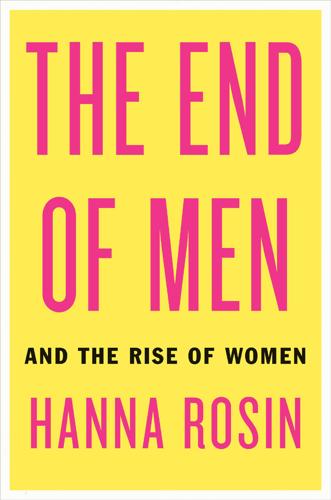
The End of Men: And the Rise of Women
by
Hanna Rosin
Published 31 Aug 2012
If machines dealt the first blow to work as the exclusive realm of men, office life dealt the second. “Where would a sense of maleness come from for the worker who sat at a desk all day?” historian Elliott Gorn wrote. “Where was virility to be found in increasingly faceless bureaucracies?” Joel Garreau picks up on this phenomenon in his 1991 book, Edge City, which explores the rise of suburbs as home to giant swaths of office space along with the usual houses and malls. Companies began moving out of the city in search not only of lower rent but also of the “best educated, most conscientious, most stable workers.” They found their brightest prospects among “underemployed females living in middle-class communities on the fringes of the old urban areas.”
…
for pharmacy school the tipping point: According to data from the American Association of Colleges of Pharmacy, 1985 was the first year that female first professional degree recipients outnumbered males: 53.9 percent to 46.1 percent. “Where would a sense of maleness”: Elliott J. Gorn, The Manly Art: Bare-Knuckle Prize Fighting in America (Ithaca, NY: Cornell University Press, 1986, 2010), p. 192 (2010 edition). Joel Garreau picks up on this phenomenon: Joel Garreau, Edge City: Life on the New Frontier (New York: Doubleday, 1991). “Once pharmacy shed the Victorian view”: Henderson, p. 106. Robots can count tablets more accurately”: Albert Wertheimer, foreword to Social Pharmacy: Innovation and Development (Philadelphia: Pharmaceutical Press, 1994), p. ix–xi. In a 2005 international study: Lex Borghans, Bas Ter Weel, and Bruce A.
…
See also Silicon Valley California, University of, 156 Davis, 201 San Diego, 188 Cambridge University, 174 Canadian Medical Association, 68 Capone, Al, 178 Carbone, June, 88 Carnegie Mellon University, 207–8 Carroll, Jason Michael, 95 Carter, Jimmy, 92 Cassidy, Sukhinder Singh, 226 Census Bureau, U.S., 92, 153 Center for American Progress, 49, 124 Center on Juvenile and Criminal Justice, 20 Centers for Disease Control and Prevention (CDC), 19, 200 Central California Research Laboratories, 170 Chasing Stars (Groysberg), 203 Cheers (television show), 56 Chicago, University of, 185, 251 Business School, 216, 218 Chicopee (Massachusetts), 179 Child care, 14, 54, 218, 221–22, 224, 242, 264 government options for, 244 jobs in, 9, 118, 124 China, 5, 166 China Post, The, 239 Christians, 97 evangelical, 92, 284n Chung, James, 107 Chung, Vivien, 251–52 Citigroup, 205 Civil rights, 132, 148 Civil Rights Commission, U.S., 146 Civil War, 128 Clerical schools, 120, 130 Clovis (California), 169 Coal (television show), 87 Cognitive dissonance, 33 Cohen, Bernard, 68 Cold War, 152 Colorado, 170 Colombia, 55, 81, 237 Color Me Flo (Kennedy), 65 Columbia University, 119 Business School, 200 Comedy Central, 126–27, 143 Competition, 52, 174, 244 academic, in Korea, 232–33 for college admissions, 160 in traditional societies, 174, 188–89 Confucianism, 233, 234, 257 Congress, U.S., 205 Cookie magazine, 11 Coontz, Stephanie, 51 Cooper, Hannah, 113–17, 119–20, 123–24, 126–27, 130, 141–43 Cornwell, Patricia, 176 Cosby, Bill, 90 Cosmopolitan magazine, 31, 40 Creal, Cameron, 156 Creative Korea party, 249 Crime, violent, 175–85 against women, decline in, 19, 176, 182 committed by women, 176–78, 184–85 Daily Beast, The, 219, 228 “Dancing on My Own” (song), 44 Dating sites, 52, 255 Daum, Meghan, 31 Delahunty, Jennifer, 158–59 Deloitte Consulting, 141, 226 Delta Kappa Epsilon, 17 Democratic Party, 148 Denney, Leandra, 88 Denny’s, 179 Despentes, Virginie, 238, 256 Diana Chronicles, The (Brown), 228 Diary of a Wimpy Kid (Kinney), 190 DiPrete, Thomas A., 159 Divided Labours (Browne), 174 Divorce, 39–40, 49, 66–68, 94, 98, 101, 269 in Asia, 6, 238, 255 of breadwinner wives and unemployed husbands, 51, 81–82 and career opportunities for women, 152–53, 157 custody of children after, 125 financial impacts of, 68, 91, 283n murder as alternative to, 170, 172 regional differences in rates of, 92 Doctors, female, 59, 117, 132, 255–56 specialties chosen by, 118, 140 Domestic violence, 14, 170, 183 Drew, Ina, 202–3 Druggists’ Bulletin, 129 Drug Topics magazine, 131 Duke University, 43 Dunham, Lena, 43 Dushane, Melodi, 179 eBay, 224 Ebony magazine, 89 Economist, The, 253 Ecuador, 55 Edge City (Garreau), 133 Edin, Kathryn, 92–93 Education Department, U.S., 161, 224 Ehrenreich, Barbara, 41, 63 Eliot, George, 163 Eliot, Lise, 161, 174 Ellis, Bret Easton, 173 El-Scari, Mustafaa, 89–90 Empowerment, 30, 38, 45, 190 EMTs, 264 Engineers, 13, 54, 73, 80, 108, 150, 196 England, Paula, 24–25 Enlightened Power (Gergen), 199 Ericsson, Ronald, 11–13 Ernst & Young, 226 Erotic capital, 30, 37–38 Esteve, Albert, 237–38 Evans, Harry, 228 Evans, Jenelle, 179 Ewha University, 232–33, 239 Facebook, 181, 195, 197, 215, 224, 225, 230 Faludi, Susan, 9 Farber, Henry, 86 Farrell, Warren, 69, 72 Fast-food restaurants, female violence in, 179 Federal Bureau of Investigation (FBI), 176 Fels, Anna, 217 Feminism, 11, 12, 14–15, 21, 50, 60, 65–66, 75–76, 155, 182, 233 accusations against, 160 career opportunities and, 115, 124, 129, 152, 198, 215, 219 changing cultural norms in response to, 175 erotic capital and, 30 in Iceland, 202 motherhood and, 75–76, 93, 125 second-wave, 58 sexual norms and, 37–38, 41 Title IX complaints filed by, 17 in views of murders by women, 178 Financial planning, 118 Fiorina, Carly, 219 Fisher, Helen, 266 Flaubert, Gustave, 118 Flexibility, workplace, 140 Florida, Lottery, winners in, 94 Florida State University, 42 Food and Drug Administration (FDA), 12 Food preparation, 118, 124 Forbes magazine, 205 Forensic pathology, 118 Fort Lauderdale (Florida), 81, 180 Fortune 500 companies, 81, 198 Fortune magazine, 205 Fox Television, 225 France, 117, 237, 251, 252 Frankel, Lois, 34, 209 Franklin, Bernard, 154, 156 Friedan, Betty, 53 From Chivalry to Terrorism (Braudy), 266–67 Fulbright scholarships, 255 G.I.

The Human City: Urbanism for the Rest of Us
by
Joel Kotkin
Published 11 Apr 2016
Yet this has come even as the city’s outer suburban ring beyond Beltway 8 has also grown, last year attracting roughly 80 percent of all new homebuyers.10 Many residents have come from the inner rings of Houston, which like many urban cores have become both denser and less child-oriented in recent decades. These onetime inner-core residents may have enjoyed the pace and excitement closer to downtown or the Galleria edge city, but as they sought to settle down with their families, Cinco beckoned. “You look for a house when you have kids, and then you stay because this is what works for you,” says Doug Bazzy, an IT consultant who moved to Cinco 14 years ago with his wife and three kids. “This is something that we were looking for, a more neighborly community—and that’s why we are staying even as our kids leave the nest.”
…
Although he had some sympathy for the ideal of the “garden city,” he maintained that most suburbs grant their denizens only “an encapsulated life,” in which each resident is a prisoner of his car, his home, and his isolation—so much so that “even the advantages of the primary neighborhood group disappear.”138 More recently, John Norquist, a former Milwaukee mayor and leading New Urbanist, contended, as is often asserted, that people have “grown tired of the cul-de-sacs, isolation and sterility of edge cities.”139 In much the same way, New Urbanist guru Andrés Duany insists that largely suburbanized cities such as Phoenix are places “where civic life has almost ceased to exist,” although this assertion is not backed up with any data.140 The suburb, according to the Congress for the New Urbanism, “spells the end of authentic civic life.”141 The more hyperbolic social critic James Howard Kunstler goes even further.
…
“The Return of the Multi-Generational Family Household,” Pew Research Center, http://www.pewsocialtrends.org/2010/03/18/the-return-of-the-multi-generational-family-household/. TEAFORD, Jon C. (2008). The American Suburb: The Basics, New York: Routledge. ——— (1993). Cities of the Heartland: The Rise and Fall of the Industrial Midwest, Bloomington: Indiana University Press. ——— (1997). Post-Suburbia: Government and Politics in Edge Cities, Baltimore: Johns Hopkins Press. TEIXEIRA, Ana Claudia and BAIOCCHI, Gianpaolo. (2013, August 1). “Who Speaks for Brazil’s Streets?,” Real Clear World, http://www.realclearworld.com/articles/2013/08/01/who_speaks_for_brazils_streets_105361-2.html. TEMBHEKAR, Chittaranjan. (2009). “Mumbaikars die younger than other Indians: Study,” The Times of India, http://timesofindia.indiatimes.com/india/Mumbaikars-die-younger-than-other-Indians-Study/articleshow/5190726.cms.
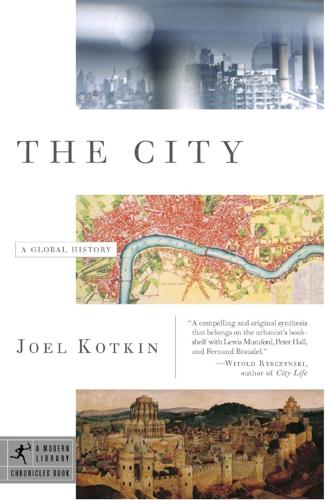
The City: A Global History
by
Joel Kotkin
Published 1 Jan 2005
Fred Siegel, The Future Once Happened Here: New York, D.C., L.A., and the Fate of America’s Big Cities (New York: Free Press, 1997; uncorrected proof), x. 3. Robert Moses, “Are Cities Dead?,” in Metropolis: Values in Conflict, 53. 4. Jon C. Teaford, Post-Suburbia: Government and Politics in the Edge Cities (Baltimore: Johns Hopkins University Press, 1997), 10. 5. Ralph G. Martin, “A New Life Style,” in Louis H. Masotti and Jeffrey K. Hadden, Suburbia in Transition (New York: New Viewpoints, 1974), 14–21; William H. Whyte, The Organization Man (Garden City, N.Y.: Doubleday, 1957), 331. 6. Andres Duany, Elizabeth Plater-Zybeck, and Jeff Sperk, Suburban Nation: The Rise of Sprawl and the Decline of the American Dream (New York: North Point Press, 2000), xii, 59. 7.
…
Anyone delving into things Californian must also linger with the magnificent series of California histories written by Kevin Starr (all available from Oxford University Press). Excellent general histories of suburbia include Kenneth Jackson’s Crabgrass Frontier: The Suburbanization of the United States (Oxford University Press, 1985), Robert Fishman’s Bourgeois Utopias: The Rise and Fall of Suburbia (Basic Books, 1987), and Joel Garreau’s Edge City: Life on the New Frontier (Doubleday, 1991). The parallel decline of traditional cities is well chronicled in such worthy books as Witold Rybczynski’s City Life: Urban Expectations in the New World (Scribner’s, 1995), Robert M. Fogelson’s Downtown: Its Rise and Fall, 1880–1950 (Yale University Press, 2001), and Fred Siegel’s The Future Once Happened Here: New York, D.C., L.A., and the Fate of America’s Big Cities (Free Press, 1997).
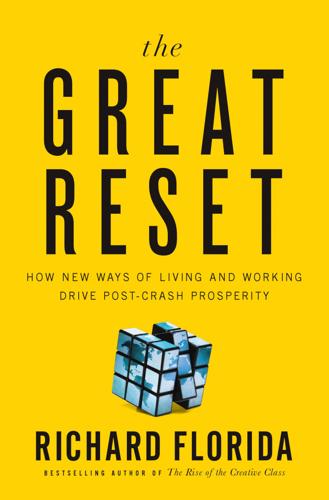
The Great Reset: How the Post-Crash Economy Will Change the Way We Live and Work
by
Richard Florida
Published 22 Apr 2010
It’s a mistake to consider suburbanization a backward step and impugn it wholesale, with the catchall slur of “sprawl,” and to see only more compact, urban-style back-to-the-city development as a path to the future. This is no black-or-white, city-versus-suburb, winner-takes-all battle. Cities and suburbs alike are part of the new spatial fix. Neither our far-flung suburbs, the edge cities with their sprawling office complexes, housing subdivisions, and malls, nor even the distant exurbs will simply vanish. Companies are not likely to abandon the attractive suburban offices they’ve established, even as more and more are opening offices in more central urban locations. Many people will still commute to work by car, but those who prefer to take public transportation or walk or ride their bikes to work will also be able to.
…
One of the most promising trends I see is the redevelopment of older suburbs into denser, mixed-use communities. Such developments have sprouted up around Metro stations in Greater D.C. suburbs such as Arlington, Virginia, and Silver Spring, Maryland. And it’s happening in suburbs further out as well. Hailed not long ago as the example of a new era of car-oriented edge cities, even Tysons Corner, the giant shopping and business complex in Fairfax, Virginia, has an ambitious plan to reconfigure itself from a car-oriented suburb to a more pedestrian-friendly, live-work-play community located around a new rail line intended to free people from their cars. In Phoenix, a project called Green Street Development has bought a couple dozen foreclosed homes—small ranch houses of about 1,400 square feet—along mass transit lines close to downtown.
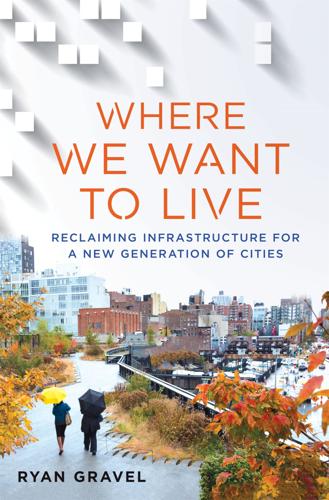
Where We Want to Live
by
Ryan Gravel
Published 2 Feb 2016
Like most of America, rather than driving almost 20 miles to the dying department stores in downtown Atlanta circa 1979, whenever we went shopping for clothes, housewares, electronics, or almost anything other than groceries, we went to the mall. My memory of it begins when it was surrounded by farms and forests. Literally, there were cows across the street. As I grew older, I watched one of America’s original “edge cities” grow up around the mall. “Perimeter Center” replaced a nearly rural landscape of ranch houses with shiny glass office towers, national-brand stores, hotels, and parking lots. The irony of such a name—a center that sits on its own perimeter—perfectly describes the fuzzy approximation of a city made of sprawl.
…
The result is a very different model for the physical plan of a community, one that devalues walking and one defined by a very different nomenclature. A new neighborhood built today more often takes on the legalistic term “subdivision,” and rather than downtowns or districts, we have commercial “strips” like Stewart Avenue and “edge cities” with names like “Perimeter Center.” Laws regarding zoning, future land use, and the subdivision of land now enshrine the concepts of separation so thoroughly into our regulations that it is actually illegal in most places to follow traditional growth patterns that respect the human dimension of walking.

City: A Guidebook for the Urban Age
by
P. D. Smith
Published 19 Jun 2012
‘In its present incarnation,’ writes Deyan Sudjic, ‘the old centre is just another piece on the board, a counter that has perhaps the same weight as the airport, or the medical centre, or the museum complex. They all swim in a soup of shopping malls, hypermarkets and warehouses, drive-in restaurants and anonymous industrial sheds, beltways and motorway boxes.’29 This is the age of the Edge City and ‘the hundred-mile city’, where the old distinctions between urban and suburban are being demolished and the central city is being eclipsed by the new, expanding ‘exopolis’.30 But downtown has not disappeared as some predicted. The bright lights of the big city centre are still burning. The excitement of earlier years may have faded, but the heart is still beating.
…
James Dabney McCabe, New York by Sunlight and Gaslight (New York, 1882), 143; cited from Fogelson (2001), 16. 15. Cited from Fogelson (2001), 19. 16. James Fullerton Muirhead, America the Land of Contrasts (Boston, 1898), 207; cited from Fogelson (2001), 20. 17. Fogelson (2001), 190. 18. Fogelson (2001), 198. 19. Joel Garreau, Edge City: Life on the New Frontier (New York: Doubleday, 1991), 104. 20. Joel Kotkin, The City: A Global History (London: Phoenix, 2005), 149. 21. An illustration by Louis Biedermann in the New York World (30 December 1900): ‘New York as it Will Be in 1999’, reproduced in Fogelson (2001), 38. 22.
…
Olschki Editore, 2007) Dougherty, James, The Fivesquare City: The City in the Religious Imagination (Notre Dame: University of Notre Dame Press, 1980) Dudd, Ross E., The Adventures of Ibn Battuta: A Muslim Traveler of the 14th Century (Berkeley: University of California Press, 1989) Franklyn, Julian, The Cockney: A Survey of London Life and Language (London: André Deutsch, 1953) Grévy, Fabienne, Graffiti Paris (New York: Abrams, 2008) Harris, Max, Carnival and Other Christian Festivals: Folk Theology and Folk Performance (Austin: University of Texas Press, 2003) Lilley, Keith D., City and Cosmos: The Medieval World in Urban Form (London: Reaktion, 2009) Peters, F.E., Jerusalem and Mecca: The Typology of the Holy City in the Near East (New York: New York University Press, 1986) Reisner, Robert, Graffiti: Two Thousand Years of Wall Writing (New York: Cowles, 1971) Reiss, Matthias (ed.), The Street as Stage: Protest Marches and Public Rallies since the Nineteenth Century (Oxford: Oxford University Press, 2007) Richie, Alexandra, Faust’s Metropolis: A History of Berlin (London: HarperCollins, 1999) Richter, Donald C., Riotous Victorians (Athens: Ohio University Press, 1981) Robinson, Andrew, The Story of Writing (London: Thames & Hudson, 2007) Naar, Jon, The Birth of Graffiti (Munich: Prestel, 2007) Sennett, Richard, Flesh and Stone: The Body and the City in Western Civilization (New York: Norton, 1997) Solnit, Rebecca, Wanderlust: A History of Walking (London: Verso, 2002) Stierlin, Henri, Islamic Art and Architecture (London: Thames & Hudson, 2001) Verderber, Stephen, Delirious New Orleans: Manifesto for an Extraordinary American City (Austin: University of Texas Press, 2009) Wolf, Maryanne, Proust and the Squid: The Story and Science of the Reading Brain (Cambridge: Icon, 2008) 4 Where to Stay Anderson, Jervis, This Was Harlem: A Cultural Portrait, 1900–1950 (New York: Farrar, Straus & Giroux, 1982) Brugmann, Jeb, Welcome to the Urban Revolution: How Cities are Changing the World (New York: Bloomsbury Press, 2009) Chen, Yong, Chinese San Francisco, 1850–1943: A Trans-Pacific Community (Stanford: Stanford University Press, 2000) Davis, Mike, Planet of Slums (London: Verso, 2006) Denby, Elaine, Grand Hotels: Reality and Illusion (London: Reaktion, 1998) Fogelson, Robert M., Downtown: Its Rise and Fall, 1880–1950 (New Haven: Yale University Press, 2001) Garreau, Joel, Edge City: Life on the New Frontier (New York: Doubleday, 1991) Gray, Fred, Designing the Seaside: Architecture, Society and Nature (London: Reaktion, 2006) Hall, Peter, Cities of Tomorrow: An Intellectual History of Urban Planning and Design in the Twentieth Century (Oxford: Blackwell, 1998) Isenberg, Alison, Downtown America: A History of the Place and the People Who Made It (Chicago: University of Chicago Press, 2004) Jackson, Kenneth T., Crabgrass Frontier: The Suburbanization of the United States (New York: Oxford University Press, 1985) Lichtenstein, Rachel, On Brick Lane (London: Penguin, 2008) Riis, Jacob, How the Other Half Lives, ed.
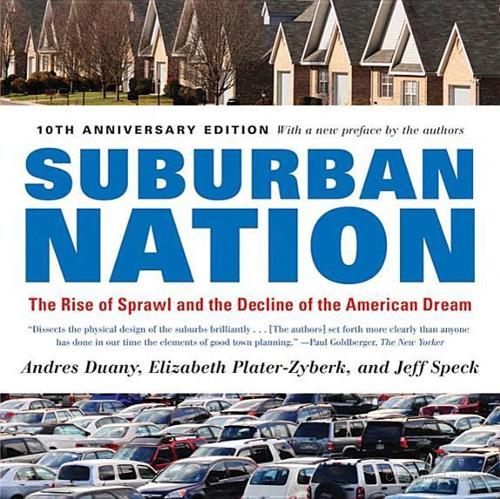
Suburban Nation
by
Andres Duany
,
Elizabeth Plater-Zyberk
and
Jeff Speck
Published 14 Sep 2010
More than any other factor, the perception of excessive traffic is what causes citizens to take up arms against growth in suburban communities. This perception is generally justified: in most American cities, the worst traffic is to be found not downtown but in the surrounding suburbs, where an “edge city” chokes highways that were originally built for lighter loads. In newer cities such as Phoenix and Atlanta, where there is not much of a downtown to speak of, traffic congestion is consistently cited as the single most frustrating aspect of daily life. Why have suburban areas, with their height limits and low density of population, proved to be such a traffic nightmare?
…
Gaines, Donna. Teenage Wasteland: Suburbia’s Dead-End Kids. Chicago: University of Chicago Press, 1998. Garland, Michelle, and Christopher Bender. “How Bad Transportation Decisions Affect the Quality of People’s Lives.” Surface Transportation Policy Project Progress IX:2 (May 1999): 4-7. Garreau, Joel. Edge City: Life on the New Frontier. New York: Anchor, 1991. Gerstenzang, James. “Cars Make Suburbs Riskier than Cities, Study Says.” Los Angeles Times, April 15, 1996: A1, A20. Gladwell, Malcolm. “Blowup.” The New Yorker, January 22, 1996: 32-36. Goodman, Percival, and Paul Goodman. Communitas: Ways of Livelihood and Means of Life.
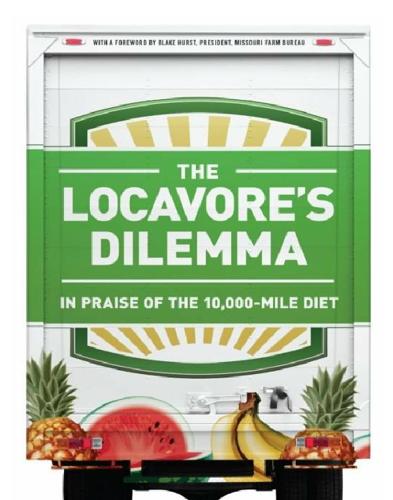
The Locavore's Dilemma
by
Pierre Desrochers
and
Hiroko Shimizu
Published 29 May 2012
True, growing cities have always been surrounded by lower density suburbs (suburbium originally referred to the area beyond the walls of Ancient Rome), but these always become denser in good economic times.54 This phenomenon has arguably accelerated in the last few decades with the development of “edge cities” (or suburban downtowns) and row housing and garden apartments in new residential developments located far from older urban centers. Actually, for quite a few years the densest metropolitan area in the United States (including both downtown and suburban areas) has been Los Angeles—and by a fair margin—a result that can be traced back to its numerous high-rise buildings spread out over its territory, high population numbers per individual housing unit, and costly water supply infrastructure.
…
(Bittman) Dreher, Rod Drought E. coli O157: O157:H7 Easterbrook, Greg Eclogues (Virgil) Ecofeminism Economic development in China city development and Economics argument for local component of SOLE diversity local food during depression trade-offs in Economies of scale in food safety small producers Economists agricultural good versus bad Edessa Edge cities Eggs(table) large operations Empire Marketing Board Employment on farms in U.S. local Energy consumption forecasts Engels, Friedrich Entrepreneurship Environmental argument, for local component of SOLE Environmental misconceptions Erosion, trade and Essay on the Principles of Population as it Affects the Future Improvement of Society (Malthus) Estabrook, Barry Ethical vegans Ettlinger, Steve Europe biotechnology and food politics Irish potato famine and production and consumption substitutions in Western Medieval See also specific places Eutrophication Exports developing counties and food safety and oriented systems prohibitions on Faegri, Knut Faith, Nicholas Famine coping with Irish potato in Japan price controls and FAO.
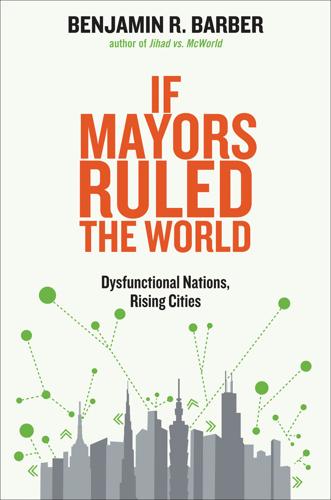
If Mayors Ruled the World: Dysfunctional Nations, Rising Cities
by
Benjamin R. Barber
Published 5 Nov 2013
New York has specialized in transforming “dead” urban places into usable public spaces: a decrepit elevated highway turned into a living park snaking along the West Side, for example, in the Highline project; or the Broadway Mall plan conceived by landscape architect Diana Balmori that would convert one hundred blocks of walled medians separating Broadway’s busy vehicle lanes—medians that currently repel human use—into inviting pedestrian islands on the city’s iconic boulevard. A belief in nature’s power can actually help the urban flourish. Public space is the city’s “natural” space, free, open to all, common. At their best, urban architects dreamed country dreams, imagining edge cities and green spaces—imagining, as Le Corbusier himself did, high-rises nestled in green lands that might decongest dense urban conurbations. Or imagining, as the designer Bruce Mau does, “a city without parks,” since the park “functions as an alibi, a moment of goodness in a field of bad.” Mau, echoing earlier decentrists, wants to “think about the entire city as a park—a place of beauty and nature and delight.”46 Singapore, a city-state not much larger than Los Angeles and home to over five million people, could, like New York, only maintain open space through careful planning.
…
Their turnaround is driven in large measure by the attitudes and location choices of the Creative Class.”11 Citing George Gilder, Florida recognizes that traditional big cities may reflect “leftover baggage from the industrial era.” They create conditions of stagnation and economic suburbanization (sprawl), and they encourage the development of so-called edge cities that actually undermine urbanity. Yet he sees too that neither size nor density is a crucial measure of what energizes the city or allows it to recover from downturns. Stubbornly hopeful in the way of urban optimists from time immemorial, Florida insists, “it turns out that what matters most for a city’s metabolism—and ultimately for its economic growth—isn’t density itself but how much people mix with each other.”12 Productivity and economic growth cannot in themselves guarantee equality, which depends more on patterns of distribution and government policies of redistribution.
…
See also Smart cities Dikshit, Sheila, 238–240, 300 Disease, 33 Dissidence and digital technology, 259 Distinguished Artist Award, 288, 394n20 District of Columbia v. Heller (2008), 129, 148 Diversity, 70 Doxiadis, Constantinos, 17 Dutkiewicz, Rafał, 91 ECAD (European Cities Against Drugs), 122–123 EcoCity, 319 Economic recession, 20 Edge cities, 46, 219 Education, 204–205, 234–236 EFUS (European Forum for Urban Security), 122–123 “e-government,” 242, 259, 387n2 Electoral district extension, 346 Electoral system, 342–343, 401n5. See also Voting Electronic networks, 262–267 Emanuel, Rahm, 7, 89, 113, 236 Employment. See Jobs Energy Cities/Energie-Cites, 132–133 Engerman, Stanley, 72 Environmental networks, 130–138 E-participation, 266 Erdoğan, Recep Tayyip, 94 Ethics of care, 282 Europe: culture, 283–284; fiscal crises, 321; networks in, 120 European Capitals of Culture, 293 European Cities Against Drugs (ECAD), 122–123 European Forum for Urban Security (EFUS), 122–123 European Union (E.U.), 112, 159–160, 344 Ewald, Johannes, 31 Exceptionalism, 115, 283 Exurbs, 65 Facebook, 249, 254 Favela, 97, 195 Fairness, 180–181, 377n13 Federal Communications Act (1934), 254 Federalism, 75, 167, 186–187 Federalist Society, 170 Federal policies, local enforcement, 170–171 Filner, Bob, 97 Financial autonomy, 40, 63–64, 321–325 “Finger Plan,” 44 Fishkin, James, 257, 307–308 Florida, Richard: on city visas, 327; on creative class, 14, 177, 178, 214, 219–224; on decentralization, 64 Focolare, 310, 397n21 Fogel, Robert, 72 Foucault, Michel, 245, 256, 389n27 Foxconn, 253, 256 France, electronic networks, 263, 391n43 Fraser, Andrea, 276–277 Freedom, 30, 40, 160–162 Free speech, 47 Fujimori, Alberto, 127 Fuller, Brandon, 327 “Fusion centers,” 125 Gaia, 17–18 Galbraith, James K., 184, 191, 383n2 Gandhi, Mohandas K., 299 Garbage collection, 6, 13 “Garden City,” 35–36, 47, 365n21 Gary, Indiana, decline, 379–380n43 Gated community, 197 Gay marriage, 167 GDP (gross domestic product), 55–58 Gemeinschaft, 42, 58, 68, 69 Gender inequality in India, 181, 377n15 Gentle Parking, 230 Germany, electronic networks in, 264 Gesellschaft, 42, 63, 69 Ghettoization of suburbs, 189 Gibson, William (Bill), 241, 263 Gilligan, Carol, 282 Giuliani, Rudy, 92, 95, 107 Glaeser, Edward, 4, 14 Global Association of Cities, 356 Global cities, 16, 65–66, 116 Global Citizen, 312, 397n26 Global Citizen Network, 312, 398n27 Global civic infrastructure, 301–302, 319, 320–321 Global governance: by cities, 163–166; cities unimpeded by nation-states in, 163–171; failure of nation-states in, 153–163; implementation of, 348–350 Globalization, 4, 11–12, 65, 77, 169, 302, 304, 343, 358 Global markets, 12 Global Network on Safer Cities, 122–123 Global parliament of mayors, 336–359; and bottom-up democracy, 336–340; forms, 352–355; funding, 356; implementation, 348–350; and interdependence, 357–359; key principles, 355; and networks, 138–140; proposal for, 340–342; representation, 342–348; trial run, 355–356; and unique role of mayors, 350–352 Global village, 17 Global warming.

The War of Art: Break Through the Blocks and Win Your Inner Creative Battles
by
Steven Pressfield
Published 2 Jun 2002
Next day came the review in Variety: “. . . Ronald Shusett and Steven Pressfield; we hope these are not their real names, for their parents’ sake.” When the first week’s grosses came in, the flick barely registered. Still I clung to hope. Maybe it’s only tanking in urban areas, maybe it’s playing better in the burbs. I motored to an Edge City multiplex. A youth manned the popcorn booth. “How’s King Kong Lives?” I asked. He flashed thumbs-down. “Miss it, man. It sucks.” I was crushed. Here I was, forty-two years old, divorced, childless, having given up all normal human pursuits to chase the dream of being a writer; now I’ve finally got my name on a big-time Hollywood production starring Linda Hamilton, and what happens?
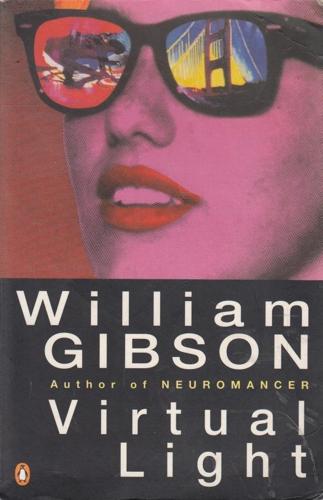
Virtual Light
by
William Gibson
Published 1 Jan 1993
"IntenSecure's licensed in NoCal, too, right? Different state, different laws, whole different attitude, they might as well be a different fucking country, but We've got our shit up there. More office buildings, lot of hotels. Gated residential's not so big up there, not 'til you get out to the edge-cities. Concord, Hacienda Business Center, like that. We got a good piece of that, too." "But it's the same company. They won't hire me here, they won't hire me there." "Fucking 'A.' Nobody talking about hiring you. What this is, there's maybe something there for you with a guy. Works freelance. Company has certain kinds of problems, sometime they bring in somebody.
…
He'd gone screeching around this big empty parking lot, just a few dead clunkers and old mattresses to get in the way, until he'd found a way out through the chain link. But there wasn't any highway there, just some deserted four-lane feeder, and it looked like Loveless had put a bullet into the navigation hardware, because the map was locked on downtown Santa Ana and just sat there, sort of flickering. Where he was had the feel of one of those fallen-in edge-cities, the kind of place that went down when the Euro-money imploded. Chevette Washington was curled up by the fridge with her eyes closed, and she wouldn't answer him. He was scared Loveless had put one through her, too, but he knew he couldn't afford to stop until he'd put at least a little distance between them and the mall.

The Gated City (Kindle Single)
by
Ryan Avent
Published 30 Aug 2011
Maryland is currently planning to add to its transit capacity with a light rail line connecting Bethesda and Silver Spring, which will facilitate addition of density along a new axis. Boldest of all is the plan to transform Tysons Corner along a new Silver Line, currently under construction. Tysons is the archetypal edge city: a cluster of suburban office complexes scattered around a massive mall, Tysons sits atop acres of parking and is bordered by several major highways and thoroughfares. It is quite often a sea of red brake lights. Fairfax County, feeling the pressure for additional development and observing the success of TOD in neighboring Arlington, has adopted an ambitious growth strategy.
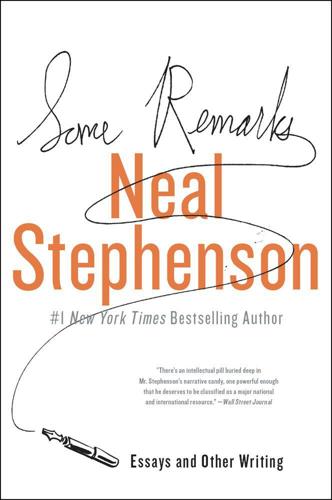
Some Remarks
by
Neal Stephenson
Published 6 Aug 2012
Twenty clicks into the test I’ve left my fear behind, I’m Polysurfing like some incarnate sofa god, my attention plays like a space laser across the Spew’s numberless Feeds, each Feed a torrent, all of them plexed together across the panascopic bandwidth of the optical fiber as if the contents of every Edge City in Greater America have been rammed into the maw of a giant pasta machine and extruded as endless, countless strands of polychrome angel hair. Within an hour or so I’ve settled into a pattern without even knowing it. I’m surfing among 20 or so different Feeds. My subconscious mind is like a retarded homunculus sacked out on the couch of my reptilian brain, his thumb wandering crazily around the keypad of the world’s largest remote control.
…
The other jaw of the trap closes faster than my teeth chomping down on my tongue: “I can take your application online right now!” says Raster. My sister-in-law is the embodiment of sugary triumph until the next evening, when I have a good news/bad news conversation with her. Good: I’m now a Metaverse customer-service rep. Bad: I don’t have a cubicle in some Edge City office complex. I telecommute from home—from her home, from her sofa. I sit there all day long, munching through my dwindling stash of tax-deductible jelly beans, wearing an operator’s headset, gripping the control unit, using it like a puppeteer’s rig to control other people’s Rasters on other people’s screens, all over the U.S.
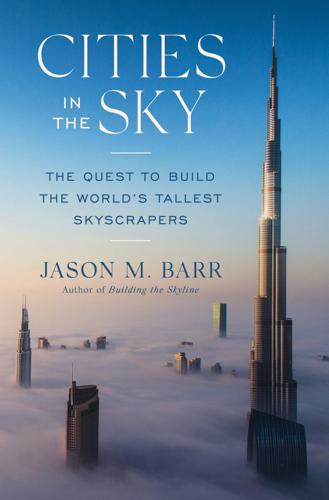
Cities in the Sky: The Quest to Build the World's Tallest Skyscrapers
by
Jason M. Barr
Published 13 May 2024
In this case, the spark was the early semiconductor manufacturers, which had deep ties to Stanford University and kept attracting talent, even as its land use and real estate sprawled outward. So, it’s clearly possible that once the agglomerative forces are ignited in an “Edge City,” they can keep burning. But the question is not whether thriving Edge Cities can sustain themselves, but rather, whether it is the best or ideal configuration of real estate and transportation that provides the maximum productivity for the least cost. The problem is that we cannot create, or re-create, some hypothetical alternative reality, where we change San Jose zoning in, say, 1960 and see how an alternative high-rise, mass-transit version would have performed.
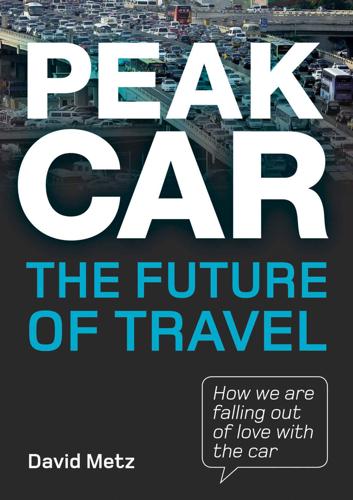
Peak Car: The Future of Travel
by
David Metz
Published 21 Jan 2014
Cities have a choice: they can house their expanding population in new low density suburbs on greenfield sites, where car use is attractive, or in higher density more central areas, often built on former used sites (‘brownfield’), where car use is constrained by road space and public transport is more effective. At one time it looked as though the predominant choice would be suburban or ‘exurban’, with US ‘edge cities’ growing just outside existing city limits to provide office space and new homes in proximity, leaving the old commercial centres to die. Recently, however, there has been a revival of city centre activity, with both business services and residences being newly built or converted from historic commercial properties.
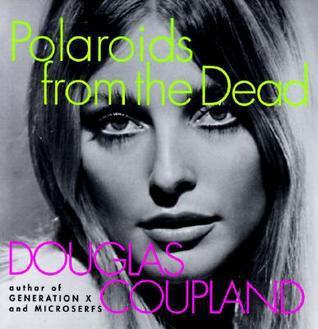
Polaroids From the Dead
by
Douglas Coupland
Published 1 Jan 1996
Technically, Brentwood also includes the Los Angeles National Cemetery east of the 405—the Arlington Cemetery of the West—as well as parts of Bel Air, though it would be a grueling fight to the death for Bel Aireans to accept this notion. Brentwood has an ironically mall-like name. (There are no known records of how its name came about; it emerged ex vacuo in 1907.) Malls, however, don’t exist in Brentwood—not the double-anchor, parking lot for 3,000-style malls of the edge cities. There is, however, a mini-mall at the corner of Barrington and San Vicente that sells Francis Bacon lithographs; on the berm where most other malls might have anti-loitering lighting systems installed sits a line of small Henry Moores. From Brentwood’s inception at the turn of this century, retail was seen as a land value detractor and has persistently been kept at bay.
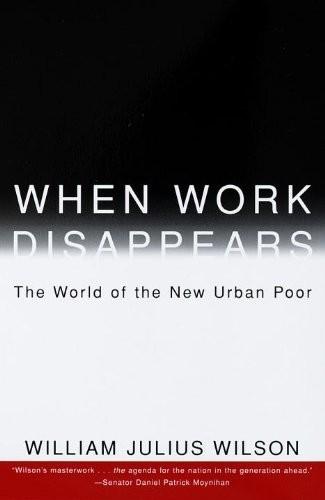
When Work Disappears: The World of the New Urban Poor
by
William Julius Wilson
Published 1 Jan 1996
The increasing suburbanization of employment has accompanied industrial restructuring and has further exacerbated the problems of inner-city joblessness and restricted access to jobs. “Metropolitan areas captured nearly 90 percent of the nation’s employment growth; much of this growth occurred in booming ‘edge cities’ at the metropolitan periphery. By 1990, many of these ‘edge cities’ had more office space and retail sales than the metropolitan downtowns.” Over the last two decades, 60 percent of the new jobs created in the Chicago metropolitan area have been located in the northwest suburbs of Cook and Du Page counties. African-Americans constitute less than 2 percent of the population in these areas.

City on the Verge
by
Mark Pendergrast
Published 5 May 2017
Atlanta is not alone in its attempts to adjust to new urban realities. In the era of the automobile, American cities evolved into places that inadvertently made lives more harried and less healthy. Inner cities decayed. People sat in cars rather than biking or walking. Junk food was cheaper and easier to find than fresh fruit and vegetables. The “edge cities” surrounding the urban core, accessible only by automobile, leeched life and business from traditional downtowns. (In metro Atlanta, the oxymoronically named Perimeter Center exemplifies the phenomenon.) Over the past two decades, some US cities have clawed their way back to civility. Eschewing suburban commuter hell, empty nesters and young professionals have relocated to innovative cities such as Portland, Oregon; Seattle, Washington; and Charlotte, North Carolina, which are far ahead of Atlanta in terms of livable initiatives such as bike lanes, trails, parks, and streetcars.
…
Scott Trubey, Atlanta Journal-Constitution, 2013 Outside the Darlington Apartments on Peachtree, the electronic Atlanta population sign had long since broached 6 million human souls as I finished writing this book. Yet the city of Atlanta held only 454,000 people, about 7 percent of that figure. That’s because the sign estimated—in fact, overestimated—the number of people in the twenty-nine-county metro Atlanta area, including suburbs and edge cities that mostly lie outside Interstate 285, the multilane Perimeter Expressway, built to relieve traffic congestion by circumventing the city. Instead, the ring road became part of the problem, encouraging external development and sprawl while providing a shorthand designation for those who live “outside the Perimeter”: OTP.
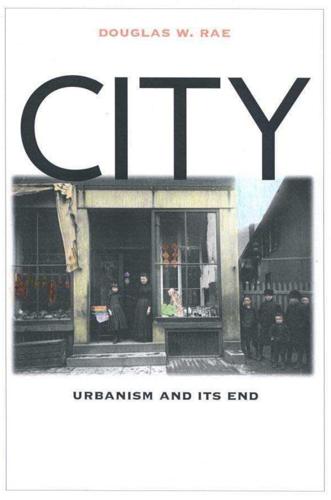
City: Urbanism and Its End
by
Douglas W. Rae
Published 15 Jan 2003
David Nye suggests the following important historical progression: “Whereas the steamboat and the train had been used to create central arteries, nodes of intersection, and dense zones of public interaction (such as railroad stations and theatre districts), Americans combined automobiles and electrification to invent privatized spaces: suburban tracts, shopping malls, gated communities, pastoral corporate estates, and ‘edge cities’ beyond the urban core.”69 If I am able to evade differences, and conflicts, by seeking private escape, is it not possible that I will lose some of the skills once so useful in negotiating those differences and resolving those conflicts? Is it not likely that I will leave behind empty spaces which will, in Jacobs’ term, become jungles?
…
When New York’s Regional Plan Association looked at that great city’s available futures, one of the questions asked concerned the availability of interesting, fairly affordable places for people to live outside the five boroughs and their immediate suburbs.61 One of the answers given was New Haven, a place with high-quality housing stock, an array of cultural amenities, and an appealing history stretching from 1637. If Metro-North commuter railroad can be induced to improve the speed and desirability of its service—some trains ran faster in 1946 than today—and if New Haven can provide the downtown amenities required by commuters (to Manhattan, or to edge-city places like Stamford), then the competitiveness of New Haven’s housing will make itself felt. The urbanist city was built upon its export industries, which brought skilled workers and investors and money to New Haven because her manufacturers— Winchester, Sargent, and the rest—were able to compete in national markets against the very best in their fields.
…
New York: Columbia University Press, 1967, 1982. 482 B I B L I O G R A P H Y ———. “The Failure of Urban Renewal.” In Urban Renewal: The Record and the Controversy, edited by James Q. Wilson, 537–57. Cambridge: MIT Press, 1966. ———. “The Negro Family: Reflections on the Moynihan Report.” Commonweal, October 15, 1965. Garreau, Joel. Edge City: Life on the New Frontier. New York: Doubleday, 1988. Garvin, Alexander. The American City: What Works, What Doesn’t. New York: McGraw-Hill, 1996. Gates, Henry Louis Jr. “Two Nations, Both Black.” Forbes 150 (1992): 132–35. Gaventa, John. Power and Powerlessness: Quiescence and Rebellion in an Appalachian Valley.
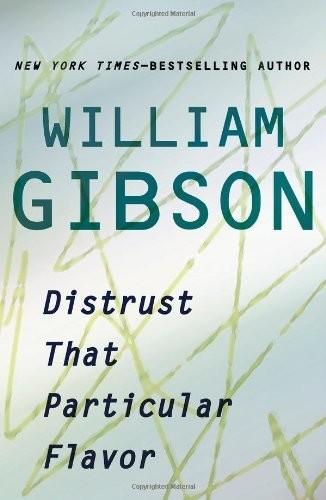
Distrust That Particular Flavor
by
William Gibson
Published 3 Jan 2012
In the coastal city of Longkou, Shandong province, China (just opposite Korea), Singaporean entrepreneurs are preparing to kick off the first of these, erecting improved port facilities and a power plant, as well as hotels, residential buildings, and, yes, shopping centers. The project, to occupy 1.3 square kilometers, reminds me of “Mr. Lee’s Greater Hong Kong” in Neal Stephenson’s Snow Crash, a sovereign nation set up like so many fried-noodle franchises along the feeder routes of edge-city America. But Mr. Lee’s Greater Singapore means very serious business, and the Chinese seem uniformly keen to get a franchise in their neighborhood, and pronto. Ordinarily, confronted with a strange city, I’m inclined to look for the parts that have broken down and fallen apart, revealing the underlying social mechanisms; how the place is really wired beneath the lay of the land as presented by the Chamber of Commerce.
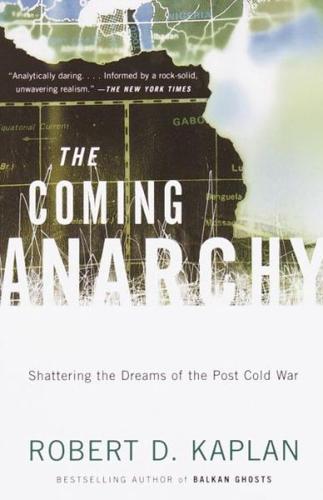
The Coming Anarchy: Shattering the Dreams of the Post Cold War
by
Robert D. Kaplan
Published 1 Jan 1994
The California state university system, in particular the San Diego campus, is perhaps the best example of corporate-academic synergy, in which a school rises in prestige because its curriculum has practical applications for nearby technology firms. Corporations, which are anchored neither to nations nor to communities, have created strip malls, edge cities, and Disneyesque tourist bubbles. Developments are not necessarily bad: they provide low prices, convenience, efficient work forces, and, in the case of tourist bubbles, safety. We need big corpora- 86 / THE COMING ANARCHY rions. Our society has reached a level of social and technological complexity at which goods and services must be produced for a price and to a standard that smaller businesses cannot manage.
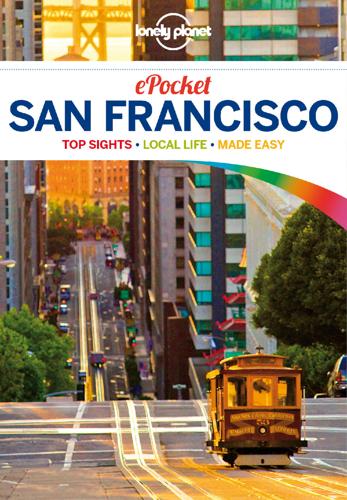
Lonely Planet Pocket San Francisco
by
Lonely Planet
and
Alison Bing
Published 31 Aug 2012
(www.westfield.com/sanfrancisco; 865 Market St; 9:30am-9pm Mon-Sat, 10am-7pm Sun; Powell Street, Powell-Mason, Powell-Hyde; ) THOMAS WINZ/LONELY PLANET IMAGES © Hayes Valley & Civic Center Don’t be fooled by its grand formality – San Francisco’s Civic Center is down to earth and cutting edge. City Hall helped launch gay rights and green politics internationally, and the arts institutions nearby ensure San Francisco is never lost for inspiration. West of City Hall lies Hayes Valley, where Victorian storefronts showcase breakthrough local designers and community gardens sprout from retired freeway ramps.

Rendezvous With Oblivion: Reports From a Sinking Society
by
Thomas Frank
Published 18 Jun 2018
These houses are gaudy, in other words, because we want gaudy; they’re big because we want big; to criticize them or any other aspect of consumer culture is to imagine yourself smarter or better than the average consumer. (Besides, as certain libertarian thinkers claimed back in the innocent 1990s, the ever increasing size of the American home, plus all those awesome new appliances, were examples of progress.) The fog of market populism grew particularly thick when issues of suburban development came up. Edge City, Joel Garreau’s influential 1991 book celebrating malls, developers, tract mansions, and office parks, started with this sentence: “The controversial assumption undergirding this book is that Americans basically are pretty smart cookies who generally know what they’re doing.” Once upon a time, Garreau reportedly felt threatened by giant suburban homes, but eventually he came to an epiphany.
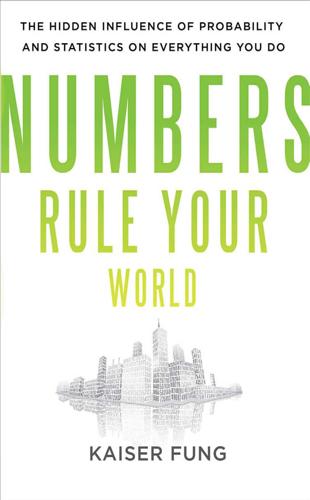
Numbers Rule Your World: The Hidden Influence of Probability and Statistics on Everything You Do
by
Kaiser Fung
Published 25 Jan 2010
Just ask the pileup of readers who sent grievances to Minneapolis Star Tribune. Those truly put off by a long trip to work every day either practice avoidance . . . “I chose to live in Minneapolis for transportation-related reasons: great access to transit and reverse commutes. . . . If people chose to live in Eden Prairie [an edge city southwest of Minneapolis], then I don’t have much sympathy for their complaints about traffic problems.” . . . or have made peace with the inevitable: “Every day, no matter how much traffic there is, it slows down right by McKnight [Road near Maplewood on I-94]. . . . There have been times when we have stopped and had a Coke somewhere because it gets so miserable sitting on the highway.”
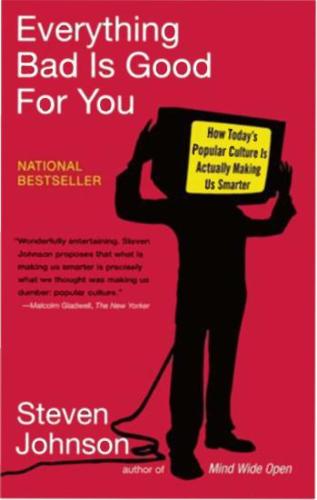
Everything Bad Is Good for You: How Popular Culture Is Making Us Smarter
by
Steven Johnson
Published 5 Apr 2006
This is true even of games that have been rightly cele- E V "- R Y T H I N G B A D I S G O O D F O R Y o u 37 brated for their open-endedness. Sim City i s famous for not forcing the playe r along a preordained narrative line; you can build any kind of community you want: small farming villages , vast industrial Coketowns, high-centric edge cities or pedestrian-friendly neighborhoods. But the game has a subtle reward archi tecture that plays a m a j o r role in the game's addictiveness : the software withholds a trove of ob jects and activities until you 've reached certain predefined levels , either of population, money, or popularity.

On Paradise Drive: How We Live Now (And Always Have) in the Future Tense
by
David Brooks
Published 2 Jun 2004
We know that thanks to the current immigration wave, the U.S. population will surge over the next few decades; we can project, thanks to Bill Frey, that in 2050 the median age in the U.S. will be 35, while the median age in Europe will be 52; and we can be reasonably sure that the new immigrants will climb into middle-class life, using and changing established institutions as they go. Suburban Core We have now driven deep into the heart of suburbia. Here there are split-level communities, cul-de-sacs, soccerplexes, regional shopping malls with ever more grand titles (plaza, galleria, court), edge cities (which have city skylines but no actual city life), and all the other stereotypical appurtenances of Homo suburbianus. When you get out here in the postwar suburbs that are now around a half century old, you can see why they’ve discombobulated so many social critics. All the other places we’ve been on our drive would be familiar to our ancestors.
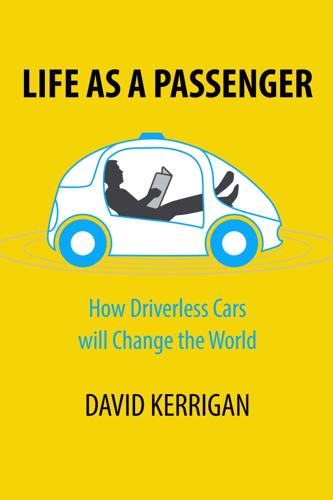
Life as a Passenger: How Driverless Cars Will Change the World
by
David Kerrigan
Published 18 Jun 2017
reload=true&tp=&arnumber=5409622&url=http:%2F%2Fieeexplore.ieee.org%2Fiel5%2F4149681%2F5409610%2F05409622.pdf%3Farnumber%3D5409622 [38] http://360.here.com/2014/04/30/jams-game-theory-equations-science-of-traffic/ [39] http://engineering.illinois.edu/news/article/21938 [40] http://en.wikipedia.org/wiki/Braess%27s_paradox [41] http://chester.faculty.asu.edu/library/access39_parking.pdf [42] http://www.transportationlca.org/losangelesparking/ [43] Rethinking a Lot (2012), Eran Ben-Joseph [44] http://shoup.bol.ucla.edu/CruisingForParkingAccess.pdf [45] http://www.telegraph.co.uk/motoring/news/10082461/Motorists-spend-106-days-looking-for-parking-spots.html [46] http://www.telegraph.co.uk/cars/news/london-parking-space-goes-on-sale-for-350000/ [47] http://www.nytimes.com/2007/07/12/us/12parking.html [48] Edge City: Life on the New Frontier, Joel Garreau, 2011 [49] http://www.economist.com/news/briefing/21720269-dont-let-people-park-free-how-not-create-traffic-jams-pollution-and-urban-sprawl [50] https://www.whitehouse.gov/sites/whitehouse.gov/files/images/Housing_Development_Toolkit%20f.2.pdf [51] Bending the Cost Curve – Solutions to Expand the Supply of Affordable Rentals.”
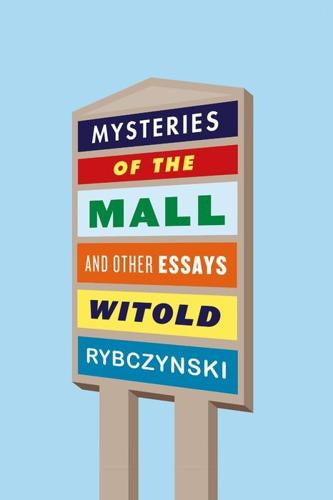
Mysteries of the Mall: And Other Essays
by
Witold Rybczynski
Published 7 Sep 2015
And these suburbs are no longer dormitory communities but self-sufficient metropolitan areas, with retail and entertainment facilities and with employment opportunities. (Nationwide, only 19 percent of worker commutes are from suburb to city, while 37 percent are from suburb to suburb.) Moreover, the physical environment of these new suburban cities, or “edge cities,” as Joel Garreau christened them, resembles Broadacre City to an uncanny degree. It seems likely that in one way or another succeeding generations will continue to find their own meanings in Wright’s rich oeuvre. For example, his exploration of figurative ornament in the second and third decades of the twentieth century is surely something that current architects, many of whom are, once again, interested in decoration, would do well to study.
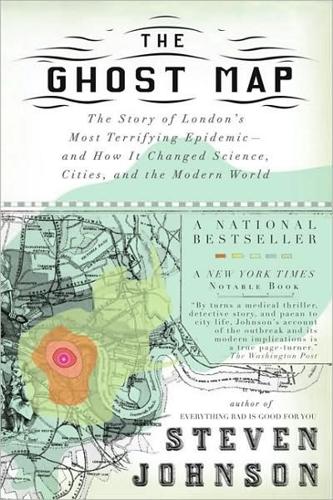
The Ghost Map: A Street, an Epidemic and the Hidden Power of Urban Networks.
by
Steven Johnson
Published 18 Oct 2006
A dispersed population requires more resources to serve it—and to connect it together—than a concentrated one.” From an overall ecosystems perspective, if you’re going to have 10 million human beings trying to share an environment with other life-forms, it’s much better to crowd all 10 million of them into a hundred square miles than it is to spread them out, edge-city style, over a space ten or a hundred times that size. If we’re going to survive as a planet with more than 6 billion people without destroying the complex balance of our natural ecosystems, the best way to do it is to crowd as many of those humans into metropolitan spaces and return the rest of the planet to Mother Nature.
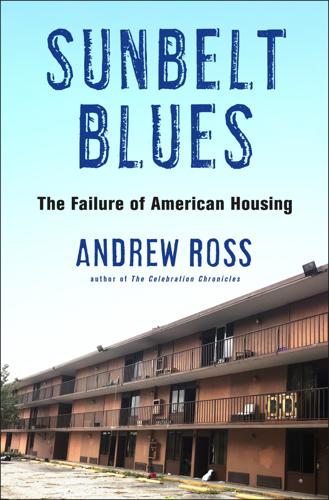
Sunbelt Blues: The Failure of American Housing
by
Andrew Ross
Published 25 Oct 2021
But with the unforgiving increase in residential rents and the acute shortage of affordable housing units, they have become the default housing choice for a multitude of low-income households. Outside almost every American town or city connected by the old pre-interstate routes, and in the suburban peripheries around the newer edge cities, you can now find a wide range of occupants living indefinitely in motels that were not built for long stays. They are shacked up outside tourist destinations like Branson and Reno, in the inner-ring suburbs of Denver and Houston, in rural areas like Northeast Oregon and the Appalachian counties of western Kentucky, on the fringes of Kansas City and depressed towns of upstate New York, and all across Southern California.

Everything Is Obvious: *Once You Know the Answer
by
Duncan J. Watts
Published 28 Mar 2011
Another important consequence of the socially embedded nature of common sense is that disagreements over matters of common sense can be surprisingly difficult to resolve. For example, it may seem remarkable to people who have grown up with the impression that New York is a crime-ridden cesspool, or at the very least a cold, hard-edged city full of people you can’t trust, that, according to a recent news story, there is a small cadre of Manhattan residents who don’t lock their doors. As the article makes clear, most people in the city think that the “no lock people” are crazy. As one woman said, “I live in a high-rise with a doorman, I’ve been there fifteen years, and I’ve never heard of a burglary in the building.

Streetfight: Handbook for an Urban Revolution
by
Janette Sadik-Khan
Published 8 Mar 2016
Today there are 480,000 pedestrians, up from 356,000 a few years earlier. As work continues on the plazas, there’s room for many, many more. Times Square became a new touchstone in the annals of city streets, one that is already invoked on every habitable continent. Instead of nibbling around the edges, cities are attempting their own Times Squares—transformative projects not in the periphery but in the heart of their downtown districts, where the politics and competing traffic demands for streets are the most volatile. A high-profile example like Times Square transcends the crossroads where it is located and represents models for streets big and small, near and far.

The Coming of Neo-Feudalism: A Warning to the Global Middle Class
by
Joel Kotkin
Published 11 May 2020
Wright broke with many of the old nostrums of urbanism, maintaining that there was no need to force high-density development in the modern era.30 In Britain, dispersion and suburbanization began in the 1850s but accelerated rapidly as soldiers came home from World War II. The result was a new level of comfort for people who were not aristocrats.31 In places like Milton Keynes, a low-density edge city outside London, the expanding middle class could find safety, privacy, and a spot of lawn. Urban planners and green activists may find much to dislike in such car-oriented places, but they succeed for prosaic reasons, notes Mark Clapson, an urban historian. The landscape embodies the preferred “Englishness” of tidy homes and greenery.
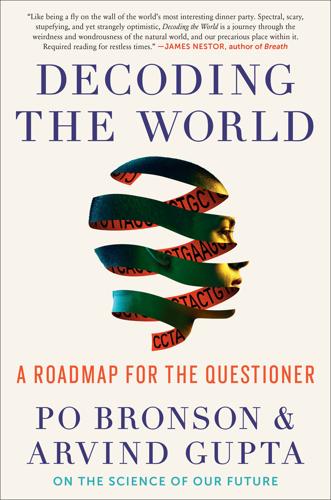
Decoding the World: A Roadmap for the Questioner
by
Po Bronson
Published 14 Jul 2020
He began to question the very idea that pilgrimages and sacred rituals could get a soul out of purgatory. I leave All Saints’ Church and walk toward Luther’s monastery. Wittenberg is an austere place. It’s very isolated. One of the nice things about Germany is that the roads between cities are not through endless suburbs and edge cities. Towns actually stop and then you drive through fields and forests. But getting to Wittenberg, this was especially the case. And I realized this isolation was probably a critical ingredient to the Reformation. Luther could think for himself here, and the people of Wittenberg weren’t directly under the foot of authorities; their bishop was forty miles away, and the archbishop was all the way down in Frankfurt.

Golden Gates: Fighting for Housing in America
by
Conor Dougherty
Published 18 Feb 2020
CEQA (“see-qua”) required cities to analyze and adopt measures to mitigate all environmental impacts identified in their reviews of local land-use decisions. The state saw an immediate explosion in environmental impact lawsuits around new housing developments—lawsuits that, in contrast to the aims of true environmentalists, would grow to be more numerous around dense “infill” developments in established neighborhoods than they were around the edge-city sprawl that the masses were (rightly) so concerned about. The Greater Bay Area typically built around forty-five thousand housing units a year in the early 1970s. Between 1972 and 1975, environmental lawsuits challenged developments that accounted for twenty-nine thousand, and by 1976 California was producing four times as many environmental impact reports as the federal government.

B Is for Bauhaus, Y Is for YouTube: Designing the Modern World From a to Z
by
Deyan Sudjic
Published 17 Feb 2015
Correa’s towers presented an idea of a city that looked as if it should belong to all its citizens but which only its elite could afford. As the road leaves the city centre, it winds through railway tracks and elevated roads from which you glimpse the huge illuminated cross above the Church of Christ the Saviour, past mosques and Hindu temples, past business parks that aspired to the condition of an edge city, as a chance to provide India’s new business elite with a city that works. The poor are never out of sight in Mumbai. They are in the city centre; they are clinging to the edges of the runway at the airport. They live on the fringes of the railways, on which scores of slum dwellers are killed every month.
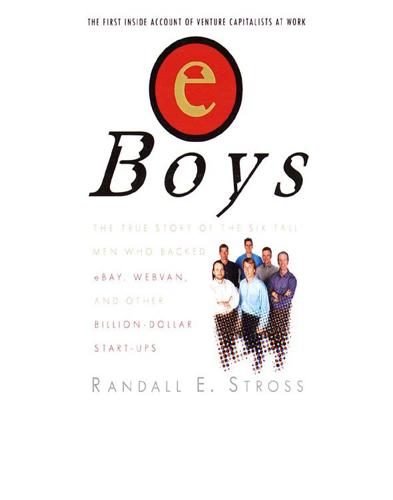
eBoys
by
Randall E. Stross
Published 30 Oct 2008
Other than buying a new bike and a new car that replaced his ten-year-old Mazda, he hadn’t spent anything on himself. In the fall of 1996, when they moved eBay from the NASA incubator to its first office, it was to a small space in an unassuming three-story building in southwest San Jose, on the edge of Edge City, with modest single-family homes across the street, a condo complex next door, a strip mall nearby. The partners had to figure out some basic strategic questions: Should eBay try to build a business based on the Auction Web site? Or should it instead try to sell auction-management software to other websites?
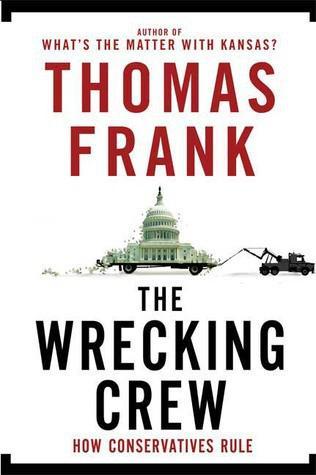
The Wrecking Crew: How Conservatives Rule
by
Thomas Frank
Published 5 Aug 2008
This includes the Ritz-Carlton “leadership center” in Chevy Chase, the Ritz-Carlton suburb in Loudoun County, and the metro area’s four Ritz-Carlton hotels. 4. I know because I read an article about the Reagan appointee who made it a showplace of outsourcing. John Rees, interview with Danford Sawyer, Review of the NEWS, July 7, 1982, pp. 39–50. 5. Joel Garreau, Edge City: Life on the New Frontier (New York: Doubleday, 1991), p. 351. Washington seems to exert a magnetic attraction on celebrators of suburbia. David Brooks’s rosy meditations on suburbia in his 2004 book, On Paradise Drive, instantly mark him as an inhabitant of the D.C. metro area. The latest priest of this faith is Richard Florida, a professor at a university located in the Virginia suburbs, who finds the city “a booming, far-flung region that’s a key node in what [he] call[s] the Creative Economy.”
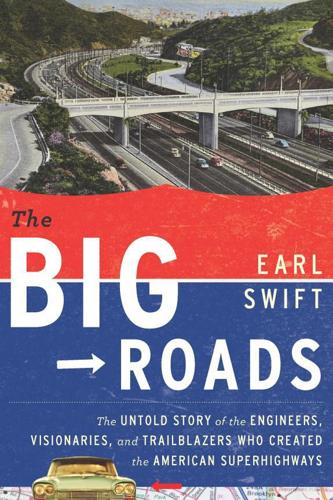
The Big Roads: The Untold Story of the Engineers, Visionaries, and Trailblazers Who Created the American Superhighways
by
Earl Swift
Published 8 Jun 2011
But the dinner correctly recognized that the interstates had turned out to be more than fancy roads—that, often in ways unanticipated by their creators, they had been agents of far-reaching change and had reordered the American landscape. That we could thank the interstates for shrinking the distances between our cities, and the untidy growth of those cities beyond Lewis Mumford's worst nightmare; for the "Edge City" of shopping and office space springing up on beltways in any number of metropolitan areas, and the "big-box" stores that were fast becoming ubiquitous features of suburban interchanges. They'd tamed rivers and bays, high plains and remote reaches of blackwater swamp where earlier roads dared not venture.
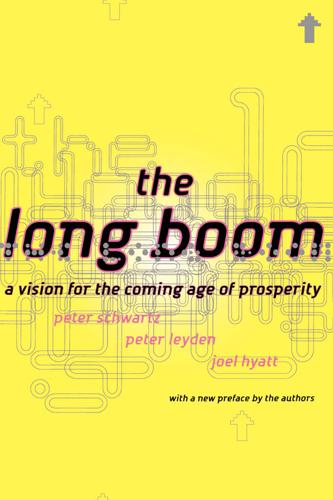
The Long Boom: A Vision for the Coming Age of Prosperity
by
Peter Schwartz
,
Peter Leyden
and
Joel Hyatt
Published 18 Oct 2000
Provides an indepth analysis of long-term economic change. Earth, by David Brin (New York: Bantam Books, 1990). A brilliant science fiction vision of a realistic world in the middle of the twenty-first century that is tightly bound together by a fully developed Internet and largely acting as one global community. Edge City, Life on the New Frontier, by Joel Garreau (New York: Doubleday, 1988). On the surface, identifies the emergence of a new form of suburban city-and analyzes it positively, as the future being born. On a deeper level, it also makes the case for the ingenuity and adaptability of average Americans, The Electric Kool-Aid Acid Test, by Tom Wolfe (New York: Bantam Books, 1968).
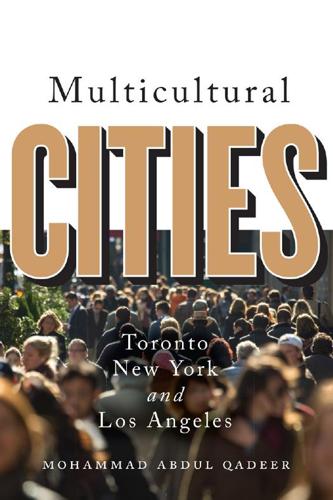
Multicultural Cities: Toronto, New York, and Los Angeles
by
Mohammed Abdul Qadeer
Published 10 Mar 2016
It views the city to be cellular in structure, divided into autonomous places by function, culture, and location. It envisages the growth impulse to work from the outside to the central core, reversing the conventional view. The city is fragmented into functional-sociocultural districts, such as edge cities, ethnoburbs, theme parks, gated communities, corporate citadels, and command and control centres.4 Such a city has many cores and is held together by political institutions and infrastructure. This West Coast view of the city is contrasted with what has been called the New York school, wherein the centre (e.g., Manhattan) holds strong, linking 58 Multicultural Cities together different classes, ethno-racial groups, and activities, the growth impulses radiate out, and city life has an edge over suburban living.5 The New York model does not envisage concentric zones, but visualizes a strong central city complemented by suburban communities of distinct identities and politics.
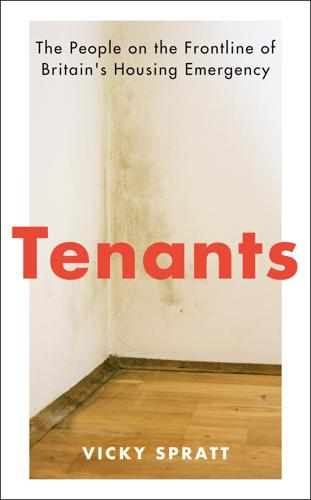
Tenants: The People on the Frontline of Britain's Housing Emergency
by
Vicky Spratt
Published 18 May 2022
But tempting as it is, it’s vital not to romanticise this, because hundreds of thousands of people still lived in slums and languished on housing waiting lists. None the less it’s the intention – so lacking today – that deserves acknowledgement and ought not to be brushed over. Croydon, where my family is from, is an edge city; a town that yearns for its own city status. It is only a fifteen-minute train ride from London Bridge, but it is in some ways unlike the capital’s other satellite towns. It receives bad press for its poor urban planning and being an architectural hotchpotch; a jumble of substandard rabbit hutch flats in office-to-residential (‘permitted development rights’) conversions, new build tower blocks and mid-century buildings, including the octagonal ‘No 1 Croydon’ or ‘50p building’, designed by Richard Seifert.
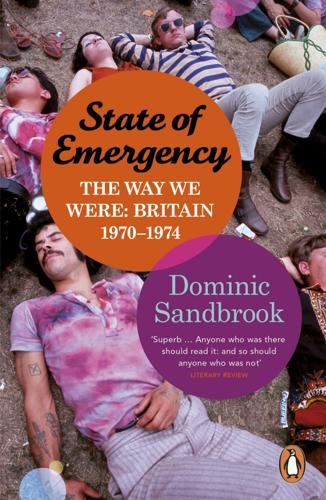
State of Emergency: The Way We Were
by
Dominic Sandbrook
Published 29 Sep 2010
Morgan, The People’s Peace, p. 394; The Times, 4 July 1975; ‘The Science Park Story’, www.cambridgesciencepark.co.uk/about/9/history-early-years; Whitehead, The Writing on the Wall, pp. 392–3; The Times, 11 September 1970; White, London in the Twentieth Century, p. 58. 58. The Times, 18 March 1970, 24 March 1972; Mark Clapson, A Social History of Milton Keynes: Middle England/Edge City (London, 2004), pp. 45–6, 54, 58, 65. 59. Clapson, A Social History of Milton Keynes, pp. 111–12; Daily Telegraph, 6 July 1974; Christopher Booker, The Seventies: Portrait of a Decade (London, 1980), pp. 145–8. 60. The Times, 17 May 1973, 23 October 1976; Andy Beckett, When the Lights Went Out: Britain in the Seventies (London, 2009), p. 430; Clapson, A Social History of Milton Keynes, pp. 112, 168. 61.
…
On a happier note, Paul Ferris, Sex and the British: A Twentieth-Century History (1993), Cate Haste, Rules of Desire: Sex in Britain,World War I to the Present (1994) and Hera Cook, The Long Sexual Revolution: English Women, Sex and Contraception 1800–1975 (2005) all make much more cheerful reading. The most useful book on London is Jerry White’s masterful London in the Twentieth Century (2001), while Mark Clapson’s books Invincible Green Suburbs, Brave New Towns (1998) and A Social History of Milton Keynes: Middle England/Edge City (2004) are terrific on suburbia. On pop music, see Barney Hoskyns, Glam! Bowie, Bolan and the Glitter Rock Revolution (1998), as well as Dave Harker’s indispensable essay ‘Blood on the Tracks: Popular Music in the 1970s’, in Bart Moore-Gilbert (ed.), The Arts in the 1970s: Cultural Closure? (1994).
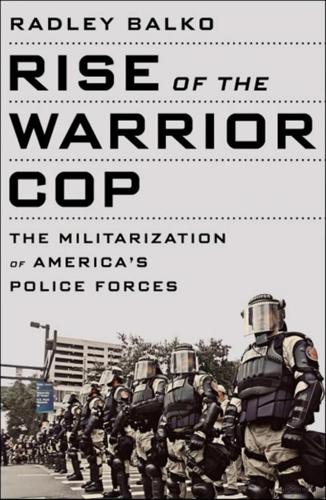
Rise of the Warrior Cop: The Militarization of America's Police Forces
by
Radley Balko
Published 14 Jun 2013
The policy was reminiscent of today’s civil asset forfeiture laws, which allow police to seize and keep for their departments cash, cars, luxury goods, and even homes, often under only the thinnest allegation of criminality. Quartering itself—the specific burden of giving up a bed to a soldier, feeding him, and clothing him—was not what edged cities like Boston to the brink of war. The actual quartering of British troops in the private homes of colonists was rare, at least up until the start of the American Revolution.7 It was the predictable fallout from positioning soldiers trained for warfare on city streets, among the civilian populace, and using them to enforce laws and maintain order that enraged colonists.
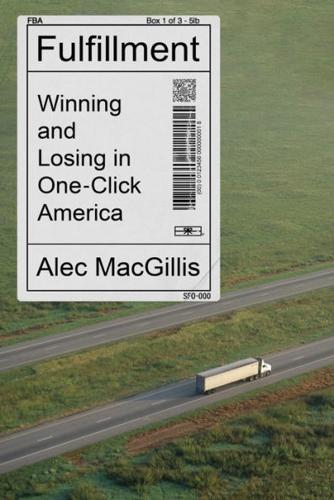
Fulfillment: Winning and Losing in One-Click America
by
Alec MacGillis
Published 16 Mar 2021
In 1992, a group of internet providers met for lunch at the Tortilla Factory in Herndon, Virginia, to make a decision that would seal the area’s advantage: they would physically bring their networks together in a new colocation point, greatly enhancing their reach and value to customers. The hub, dubbed Metropolitan Area Exchange-East, was housed in a cinder-block room within an underground parking garage in Tysons Corner, the edge city straddling the Beltway. Providing additional gravitational pull were the tax breaks bestowed on the data centers by the state of Virginia and local governments, especially Loudoun and Prince William Counties. For these Washington exurbs, the data centers were ideal neighbors: they spun off tax revenue to pay for the deluxe schools demanded by residents moving into new McMansions, but they added few cars to the clogged roads.

Cities Under Siege: The New Military Urbanism
by
Stephen Graham
Published 30 Oct 2009
As well as being reorganized through the installation of check-points, strategic city cores, such as Washington, DC and New York, have had their street furniture and landscape architecture redesigned as stealthy means of counterterror ‘target hardening’59 (Figure 4.4). Many embassy districts are being similarly redesigned. In actions reminiscent of the Cold War, the US government has also encouraged some of its key central-city office complexes to bunker down in remote ‘edge cities’. In such places, Deborah Natsios worries, ‘civil space is becoming coincident with state security space – a threatscape’, which is to say a key domain of the multilayered informational battlespace of military control technologies and ‘network-centric warfare’. The ‘security accoutrements of bollards, barbed wire, blast-resistant and tinted glazing, closed-circuit cameras and confrontational signage’ in exurban militarized complexes, she writes, are merely ‘external clues of more covert technologies being deployed to manage the civilian milieu’.60 4.4 Jeremy Nemeth’s research on green zones and passage-point urbanism, Manhattan-style.

Connectography: Mapping the Future of Global Civilization
by
Parag Khanna
Published 18 Apr 2016
The End of Normal: The Great Crisis and the Future of Growth. Simon & Schuster, 2014. ———. Inequality and Instability: A Study of the World Economy Just Before the Crisis. Oxford University Press, 2012. Garfield, Simon. On the Map: A Mind-Expanding Exploration of the Way the World Looks. Gotham, 2013. Garreau, Joel. Edge City: Life on the New Frontier. Anchor, 1992. ———. The Nine Nations of North America. Avon Books, 1982. Gattorna, John. Dynamic Supply Chains. Financial Times, 2015. Gayer, Laurent. Karachi: Ordered Disorder and the Struggle for the City. Oxford University Press, 2014. George, Rose. Ninety Percent of Everything: Inside Shipping, the Invisible Industry That Puts Clothes on Your Back, Gas in Your Car, and Food on Your Plate.

Capitalism in America: A History
by
Adrian Wooldridge
and
Alan Greenspan
Published 15 Oct 2018
In 1968, Lewis Mumford had worried about the “progressive dissolution” of America’s cities. A decade later that dissolution had become rampant. The mirror image of the decline of the cities was the continued rise of the suburbs. Manufacturing companies moved into suburban areas. By 1981, about two-thirds of all U.S. manufacturing was suburban.22 America became a land of edge cities as back-office functions moved to office parks and retailing moved to shopping malls. IT’S ALWAYS DARKEST BEFORE THE DAWN By the late 1970s, there were stirrings of a better future. The high-tech boom was on the horizon: the young Bill Gates started Microsoft in Albuquerque, New Mexico, in 1975 and Steve Jobs and Steve Wozniak founded Apple in 1976.

Manias, Panics and Crashes: A History of Financial Crises, Sixth Edition
by
Kindleberger, Charles P.
and
Robert Z., Aliber
Published 9 Aug 2011
Margin requirements of 50 percent helped. But the agony in real estate was drawn out. Construction slowed as buildings were completed, but new starts were abandoned or postponed. Vacancy rates in office buildings rose sharply, varying according to location, whether downtown, midtown, or in the ‘edge cities’ built in the suburbs during the 1980s boom. Rockefeller Center Properties, Inc., had a $1.3 billion mortgage on the Rockefeller Center in midtown Manhattan after the complex had been sold to Mitsui Real Estate. The mortgage was held in a Real Estate Investment Trust (REIT). In 1987 the trustees sought to increase the income of the trust by using the cash from short-term loans to buy back bonds that were selling at a discount.
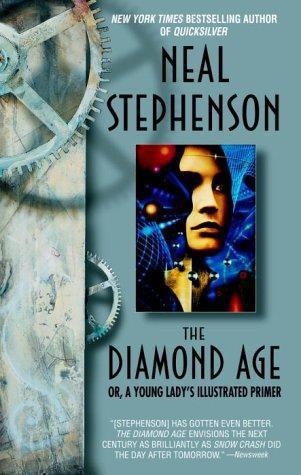
The Diamond Age
by
Neal Stephenson
Published 2 May 2000
He rode past nightclubs the size of stadiums; jaialai pits where stunned refugees gaped at the jostling of the bettors; side streets filled with boutiques, one street for fine goods made from alligators, another for furs, another for leathers; a nanotech district consisting of tiny businesses that did bespoke engineering; fruit and vegetable stands; a cul-de-sac where peddlers sold antiques from little carts, one specializing in cinnabar boxes, another in Maoist kitsch. Each time the density began to wane and he thought he must be reaching the edge of the city, he would come to another edge city of miniature three-story strip malls and it would begin again. But as the day went on, he truly did approach the limit of the city and kept riding anyway toward the west, and it became evident then that he was a madman and the people in the streets looked at him with awe and got out of his way.

Western USA
by
Lonely Planet
Three Weeks Winding Down the West Coast Beach bums and nature lovers – this trip’s for you. Kick off with fresh-roasted coffee in java-loving Seattle and check out the city’s sprawling food markets, microbreweries and waterfront. Heading south, visit Mt Rainier National Park, with superb hiking and relaxing inns nestled beneath the snow-covered peak. Continue on to the cutting-edge city of Portland, known for its sprawling parks, eco-minded residents and progressive urbanism – plus food carts, coffeehouse culture and great nightlife. Embrace nature’s bounty by driving east along the Columbia River Gorge, then turn south and make for Mt Hood for winter skiing or summer hiking. Further adventures await at the Sisters, a trio of 10,000ft peaks, and the striking blue waters of Crater Lake.
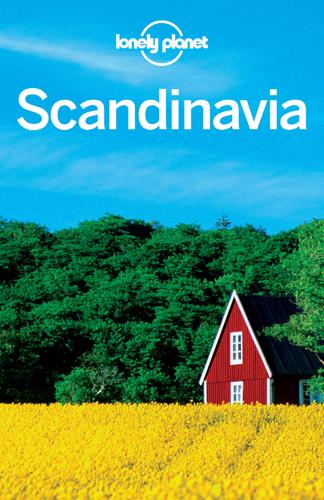
Scandinavia
by
Andy Symington
Published 24 Feb 2012
Take the spectacular three-day hike to Þórsmörk, one of Europe’s most spectacular walks. » Travel around the Ring Rd, including an R&R stop at peaceful fjord-side Akureyri (Click here ). » Head back to Denmark on the ferry if you’re still game, otherwise fly back from Reykjavík. Top of section countries at a glance The seductive call of the north is one of wild landscapes, crisp air and cutting-edge city style coloured by the epic changes of the Scandinavian seasons. Scenically, it’s hard to beat. Norway’s noble, breathtaking coastline, serrated with fjords, competes with Iceland’s harsh, volcanic majesty. Soothing Swedish and Finnish lake- and forest-scapes offer a gentler beauty. Though the towns and cities all have a definite allure – Copenhagen and St Petersburg are the ones worth the most time – the big attraction is the outdoors.
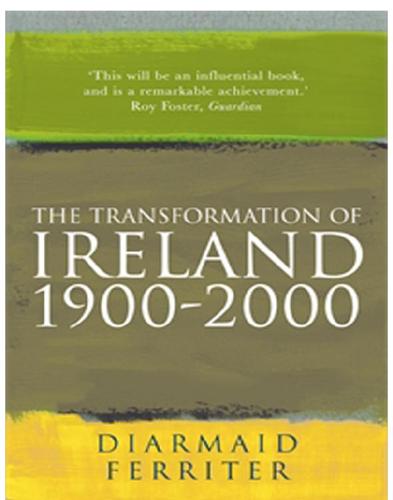
The Transformation Of Ireland 1900-2000
by
Diarmaid Ferriter
Published 15 Jul 2009
One of the country’s historical treasures – its nineteenth-century extensive rail network – was long gone; in 1920 there had been 3,442 miles of railway (including Northern Ireland); in 1957, 2,557, and in 2003 only 1,250.233 What constituted the Dublin region changed dramatically, with a new world of housing estates springing up within a 60-mile radius of the city: ‘a North American style “edge city” sprawled far out into Leinster’ owing to cheaper house prices outside the city, with a prediction that car-orientated sprawl would damage the social fabric of the country as a consequence of time spent travelling. Unfortunately, planning for these new communities took second place to land rezoning.

USA Travel Guide
by
Lonely, Planet
This is a trip for those who lean left, and who like their nature ancient and wild, and their horizons and beaches wide-open. Start in Seattle , taking in sprawling food markets, microbreweries and waterfront scenery. Heading south, visit Mt Rainier National Park , with superb hiking and relaxing inns nestled beneath the snow-covered peak. Continue on to the cutting-edge city of Portland , known for its sprawling parks, environmentally minded residents and progressive urbanism – plus food carts, coffeehouse culture and great nightlife to boot. After your culture fix, jump into nature’s bounty by driving east along the Columbia River Gorge. Then turn south and make for Mt Hood for winter skiing and summer hiking.